You might have heard of Deepfakes, which are images or videos where someone’s face is replaced by another person’s face. There are various techniques for creating Deepfakes, one of them being Generative Adversarial Networks (GANs).
A GAN is a type of neural network that can generate realistic data from random input data. When used for image generation, a generator network creates images and tries to fool a discriminator network into believing that the images are real. The discriminator network gets better at distinguishing between real and fake images over time, which forces the generator to create better and better images.
I wanted to play around with GANs for a while, specifically for generating small cartoon-like images. This post is a status update for the project so far.
Here is the code, and here are 16 examples of images generated by the current state of the network:

DCGAN Tutorial and drawing ellipses
There are many online tutorials on how to create a GAN. One of them is the DCGAN tutorial from the Tensorflow authors. This tutorial was my starting point for creating and training a GAN using the DCGAN (deep convolutional GAN) architecture.
In the tutorial, the authors train the GAN to generate hand-written digits, based on the famous MNIST dataset. Instead of creating hand-written-number-lookalikes, I wanted to see if I could generate simple shapes like these ellipses:

I thought these shapes would be a trivial task for the GAN to generate, but I was of course mistaken.
After implementing the DCGAN network based on the DCGAN tutorial, my first attempt that actually did something produced color in some kind of shape but not actual ellipses.
A note on the images shown throughout this post: Let’s say we have 10 thousand images in our dataset (in this case 10 thousand images of an ellipse). One epoch consists of running through all these images once and a network is trained for 50 epochs. At the end of each epoch, an image is captured based on 16 sample inputs to the generator. These inputs stay the same during training. Thus, we have 50 images (one for each epoch) with 16 generated samples when the network is done training, and we are ideally interested in seeing these 16 images get more realistic over time.
The video below shows the evolution of one of these network training sessions. The video is stitched together from the 50 epoch images. Notice that at the beginning of training, the output of the generator is a gray blob which is the random data. Over time, some colors emerge, until training collapses in the end and it just generates white backgrounds :-)
Ellipses in opaque black and white
Taking a step back and reviewing the tutorial again, I took note of a few things that I did not pay attention to initially:
- The tutorial uses white, opaque digits on a black background. I was using unfilled (not opaque) ellipses on a white background.
- The images are only black and white (grayscale). I was using many colors.
- The MNIST dataset consists of 60 thousand examples. I was using a few hundred images.
If the goal of the generator is to fool the discriminator, but the images of ellipses are actually mostly white background with a little bit of color, it makes somewhat intuitive sense that the generator ends up just drawing white backgrounds as seen in the video above.
With this in mind, I created 10 thousand opaque white ellipses on a black background, just to prove that the network was indeed working. Here are some examples:

The result from doing this was much better, and the generator ended up creating something that resembles circles:
Wow, I created a neural network with 1 million parameters that can generate white blobs on a black background *crowd goes wild and gives a standing ovation*.
Sarcasm aside, it is always a good feeling when the network finally does something within a reasonable timeframe (it took about a minute to train this network).
Deeper, wider, opaque, color
After the “success” of the black and white ellipses, I started reviewing some tips on how to tweak a GAN (see references at the bottom of post). Without going into too much detail, I basically made the neural network slightly deeper (more layers) and slightly wider (more features) and switched back to using random colors for the ellipses, while keeping them opaque.
Here are some examples of the input ellipses:

After training the network with these images, it was interesting to see the 16 generated samples converge to colored blobs and then change dramatically between epochs. I think this is what is known as “mode collapse” and is a known issue/risk when training GANs:
Each iteration of [the] generator over-optimizes for a particular discriminator, and the discriminator never manages to learn its way out of the trap. As a result the generators rotate through a small set of output types. This form of GAN failure is called mode collapse.
Google Developers, Common Problems with GANs
Mode collapse is most obvious when viewing the epoch images individually, so rather than stitch them together into a video, I have included 50 images below. Notice that after about 20-25 epochs, the output starts to resemble colored ellipses, and all epochs after that do not seem to improve much:
I must admit, I think there’s a certain beauty to these generated images, but to be honest, it is still just randomly colored blobs, and they could be generated with much simpler algorithms than this beast of a neural network.
Generating cartoon avatars
Instead of continuing to tweak the ellipses-generating network, I wanted to see if I could generate more complex images. My original idea was to generate cartoon like images, and to my great delight, Google provides the Cartoon Set, a dataset consisting of thousands of cartoon avatars, licensed under the CC-BY license.
You have already seen an example result of using this dataset at the top of this post. Here are the 50 epoch images from training the network on the small version of the dataset (10 thousand images). Notice that the network starts to create face-like images after just a few epochs, and then starts cycling the style of the face, probably due to the above mentioned mode collapse.:
This is as far as I got currently. I would like to create a little web app for generating these images in the browser, but that will have to wait for another day. It would also be nice to be able to provide the facial features (hair color, eye color, etc.) as inputs to the network and see how that performs.
To keep my motivation up though, I think I need to switch gears and try something else for now. This was fun! :-)
References
- Deep Convolutional Generative Adversarial Network (tutorial)
- NIPS 2016 Tutorial: Generative Adversarial Networks (paper)
- How to Train a GAN? Tips and tricks to make GANs work (tips)
A search for “DCGAN Tensorflow” yields many useful results, a lot of which I have skimmed as well, but the above are the primary resources.
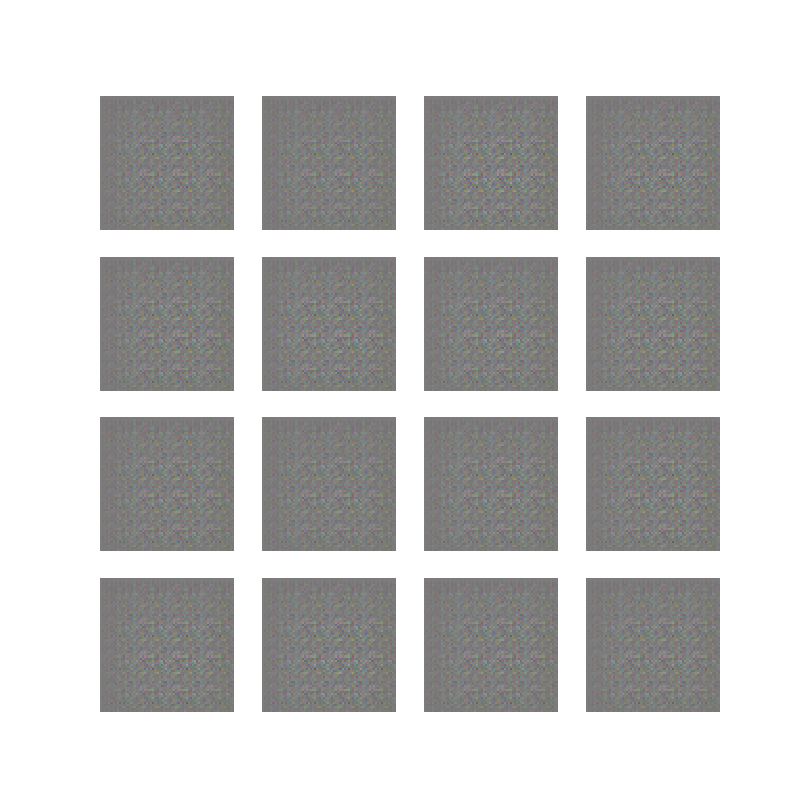
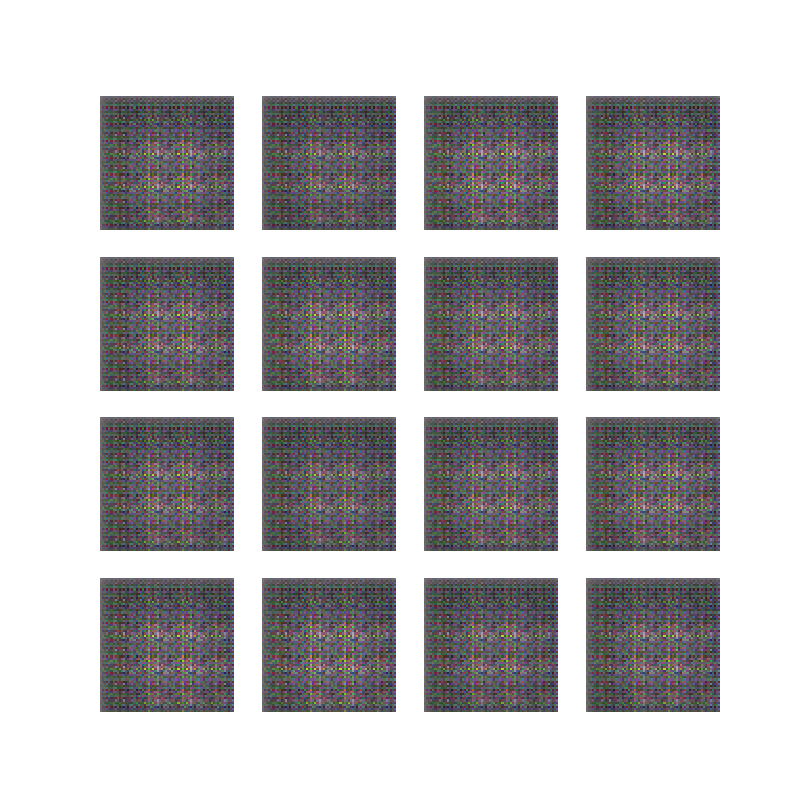
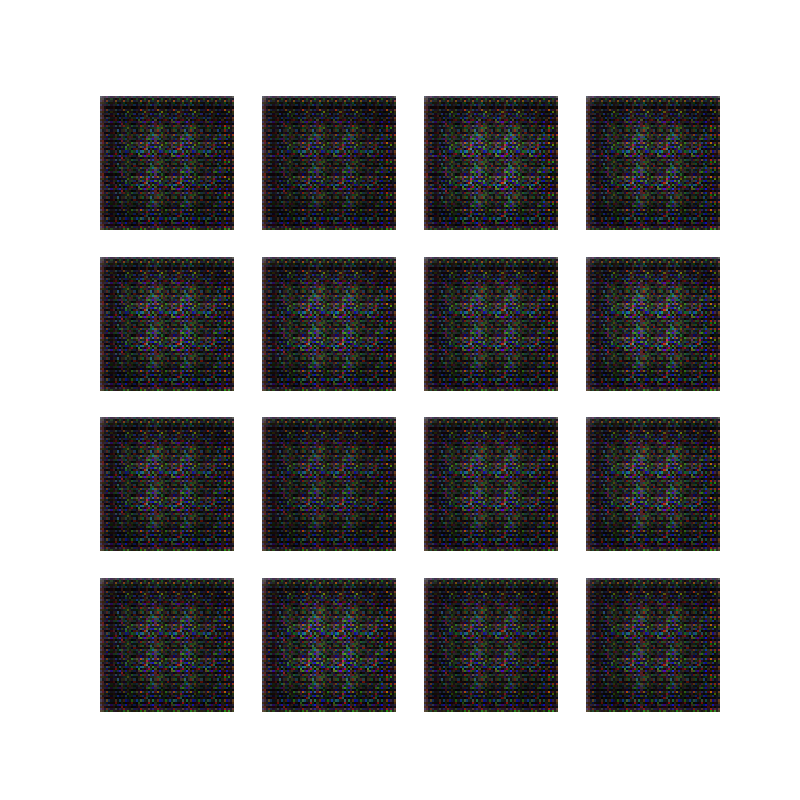


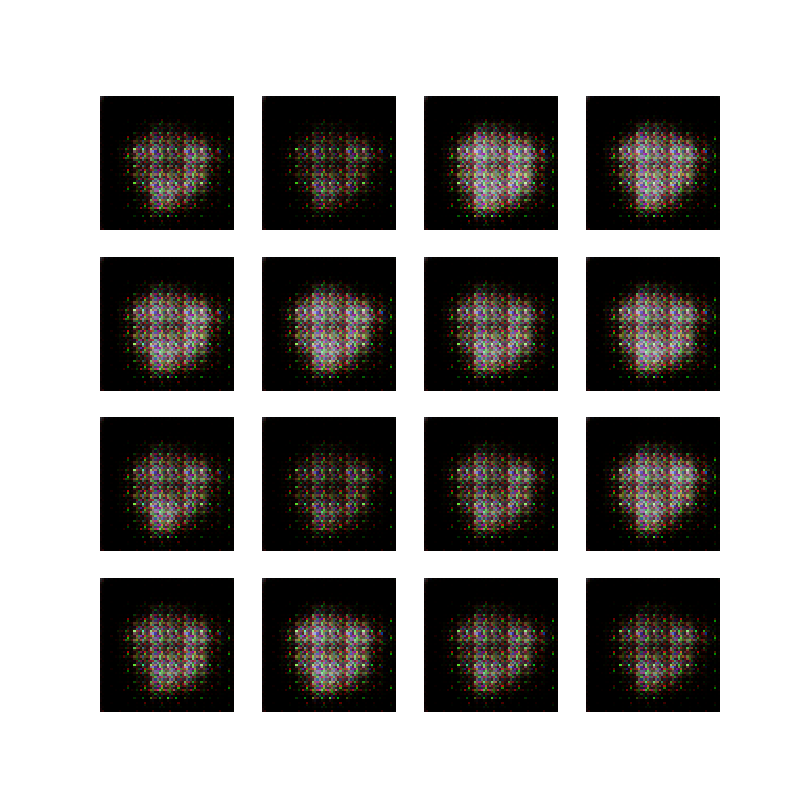
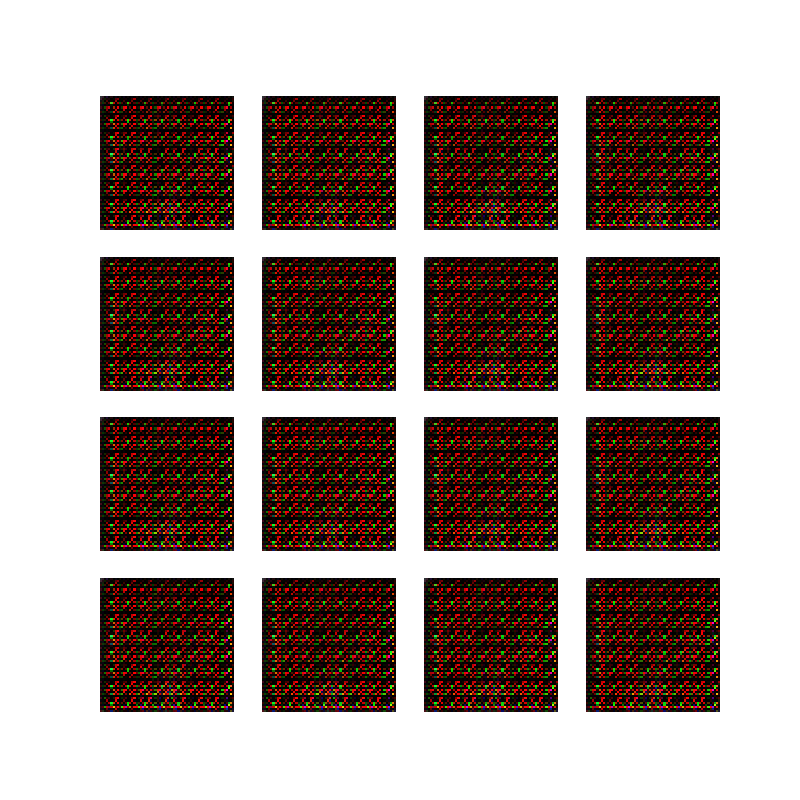

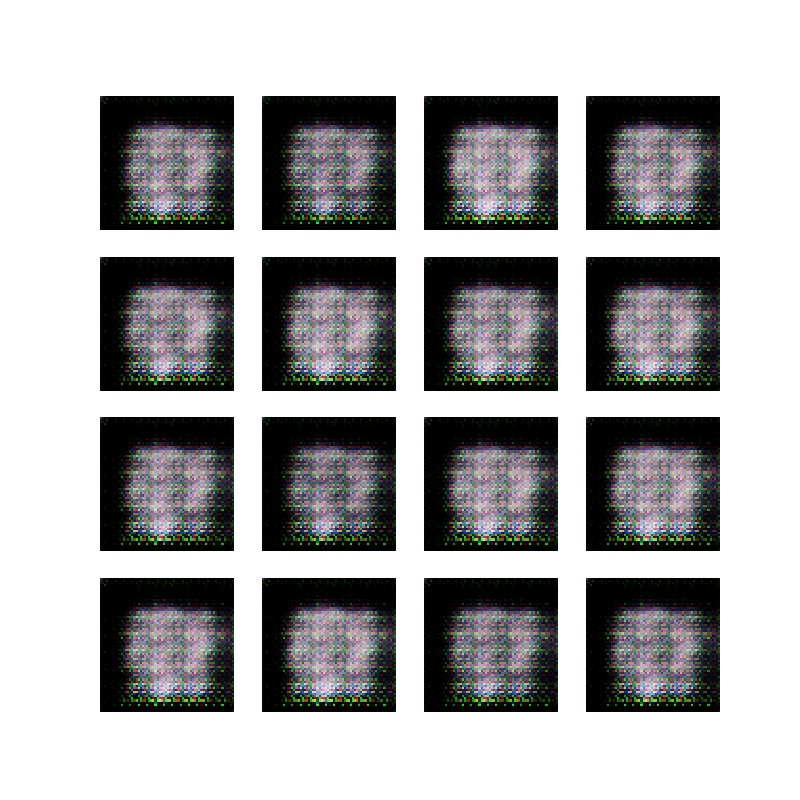
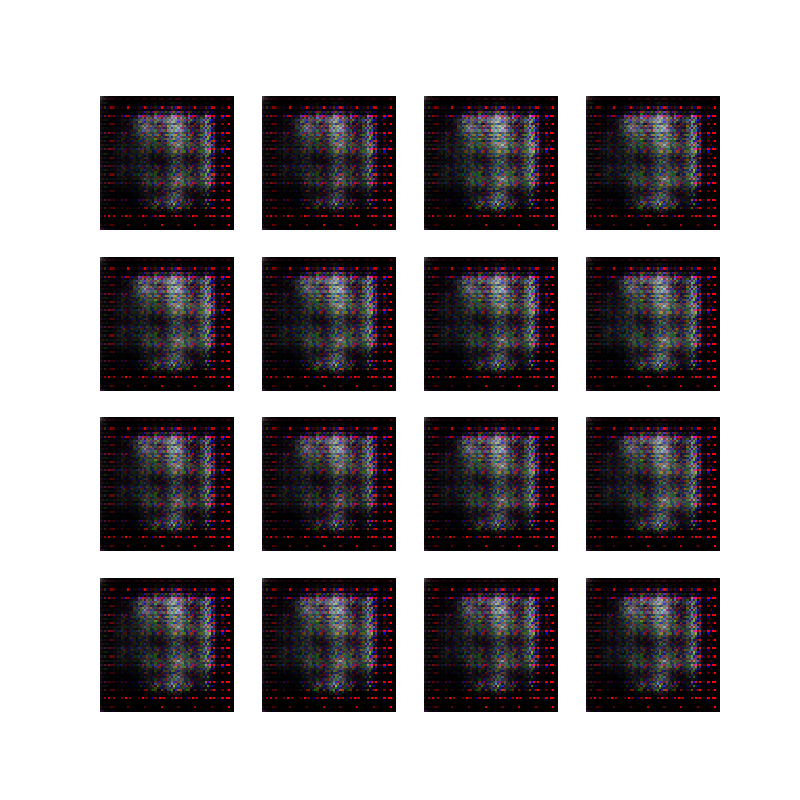
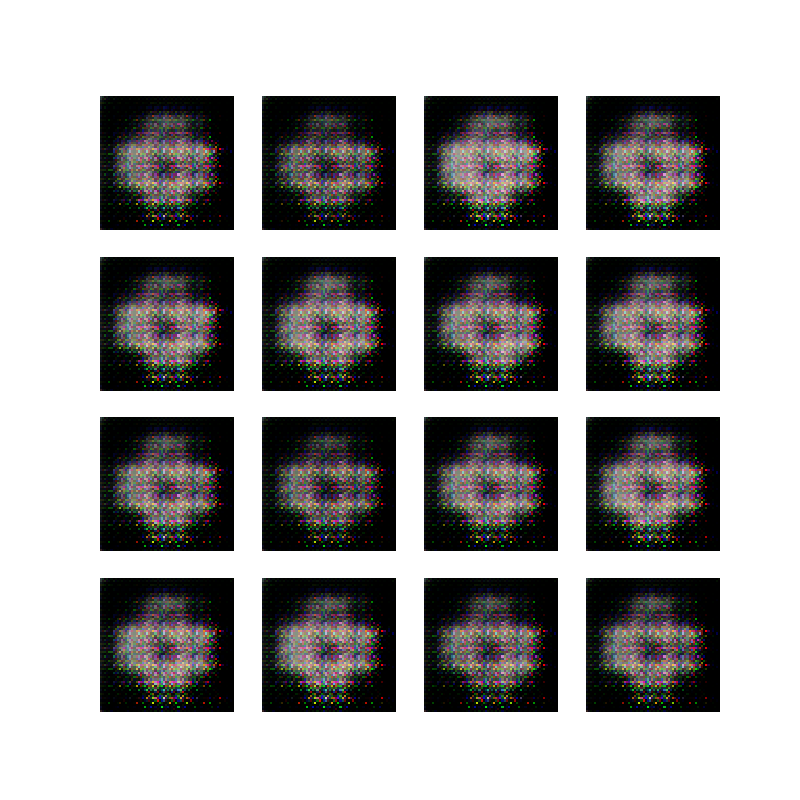
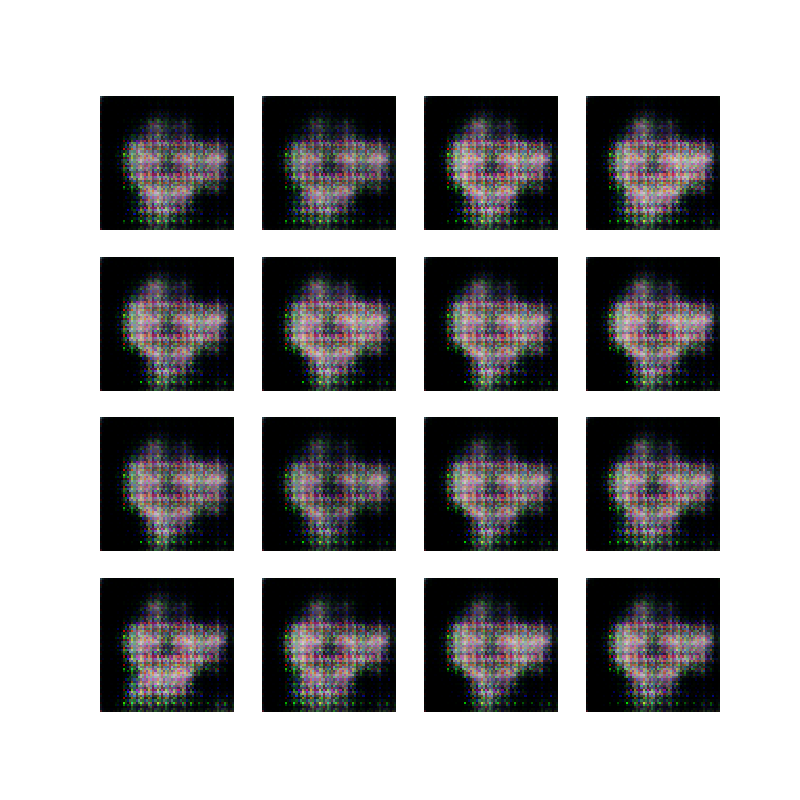
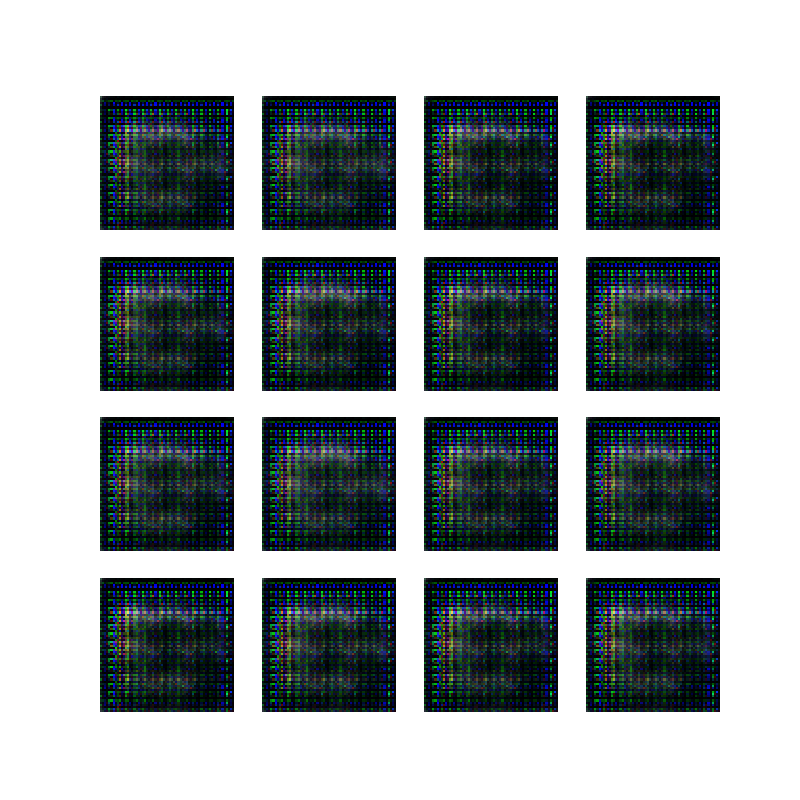
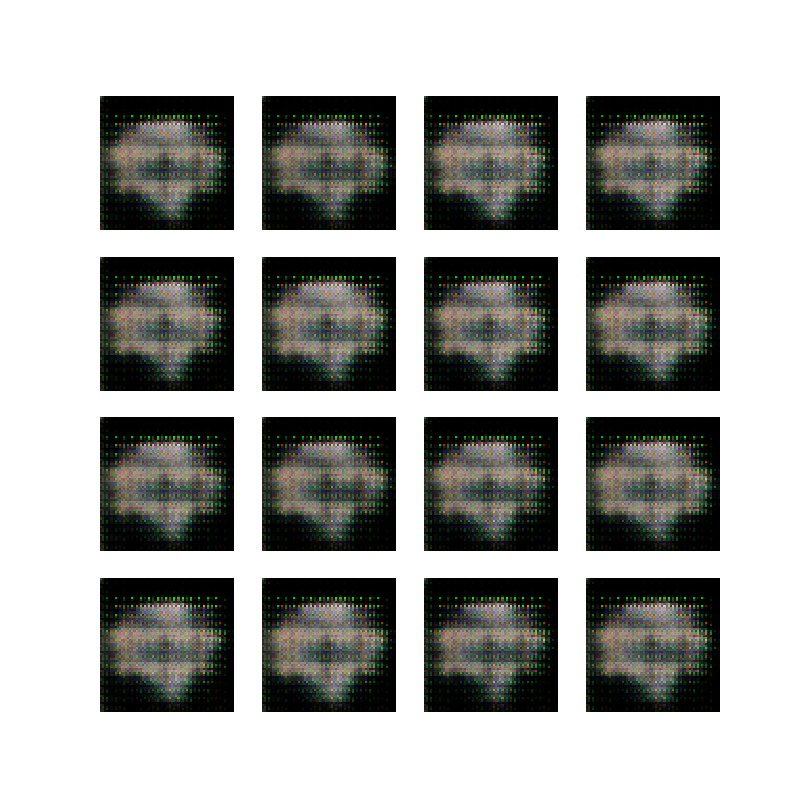
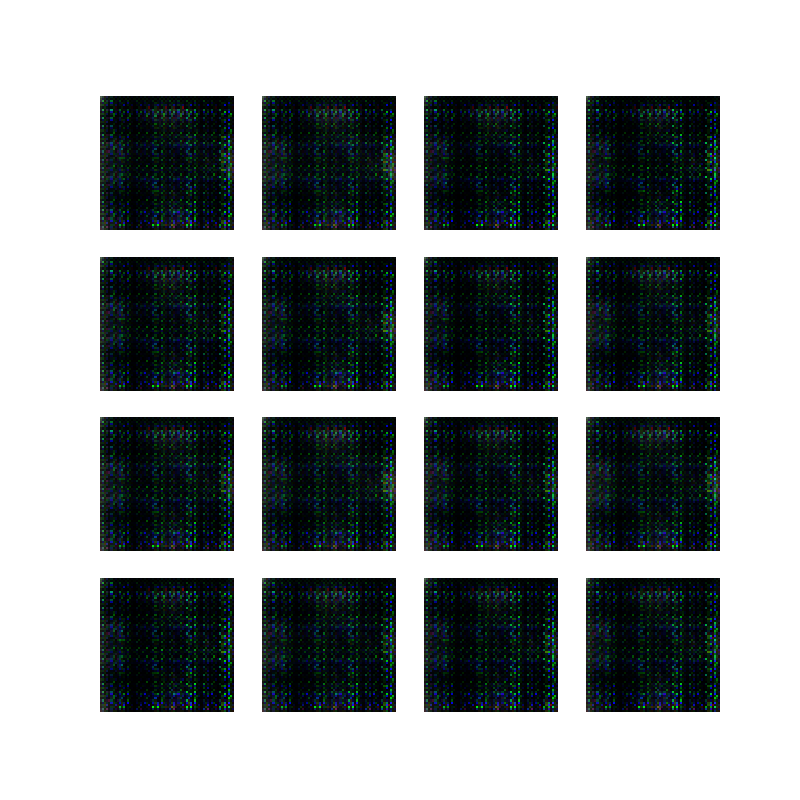
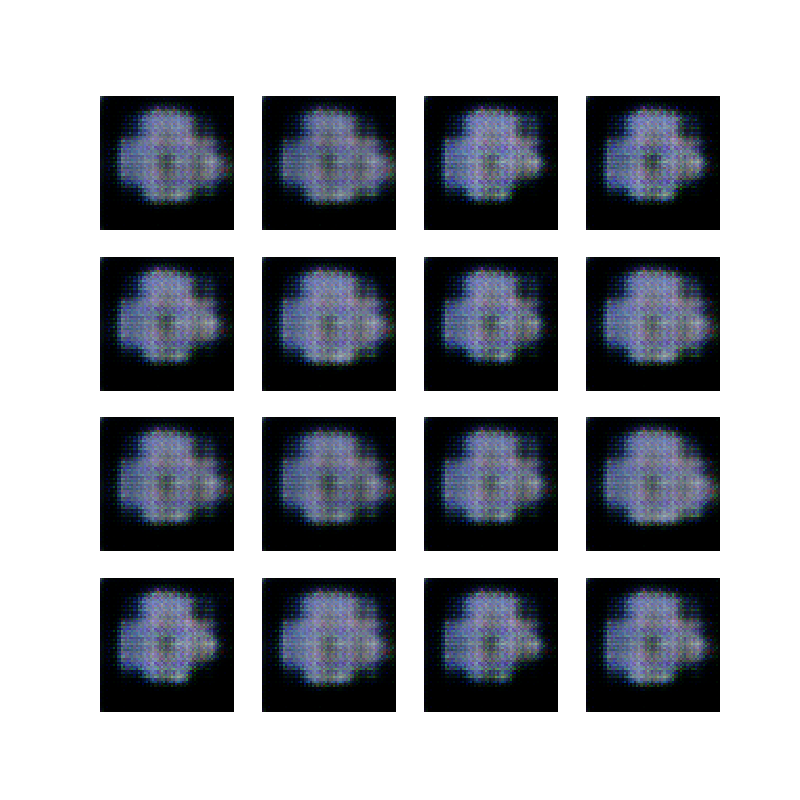
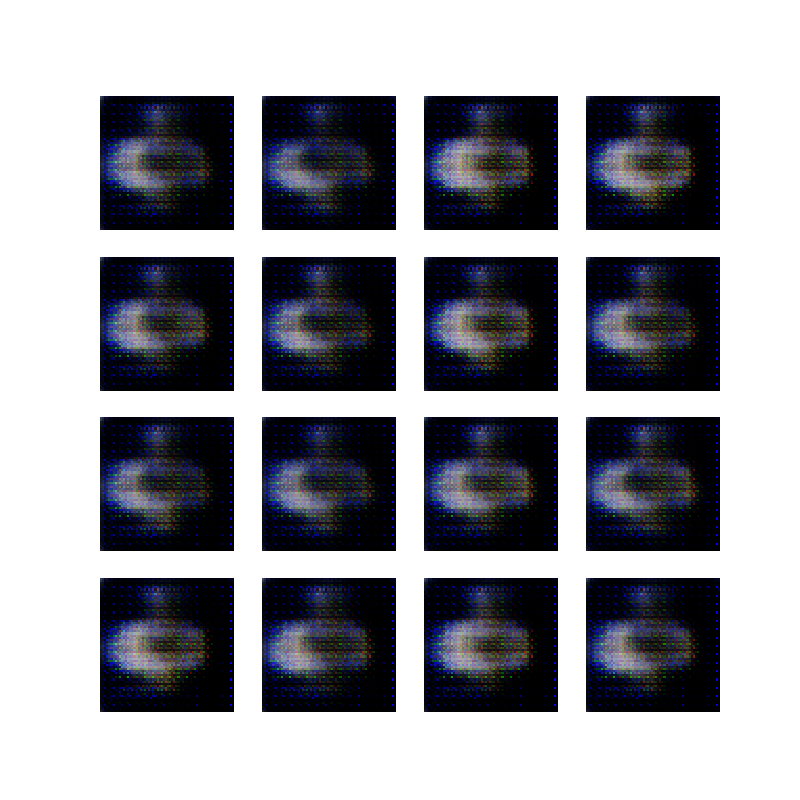


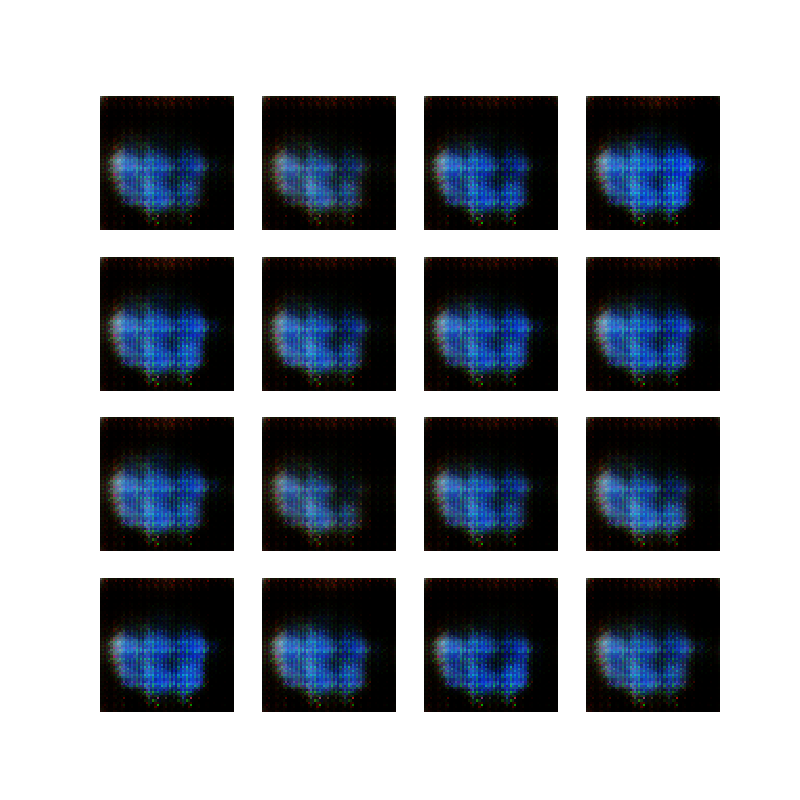
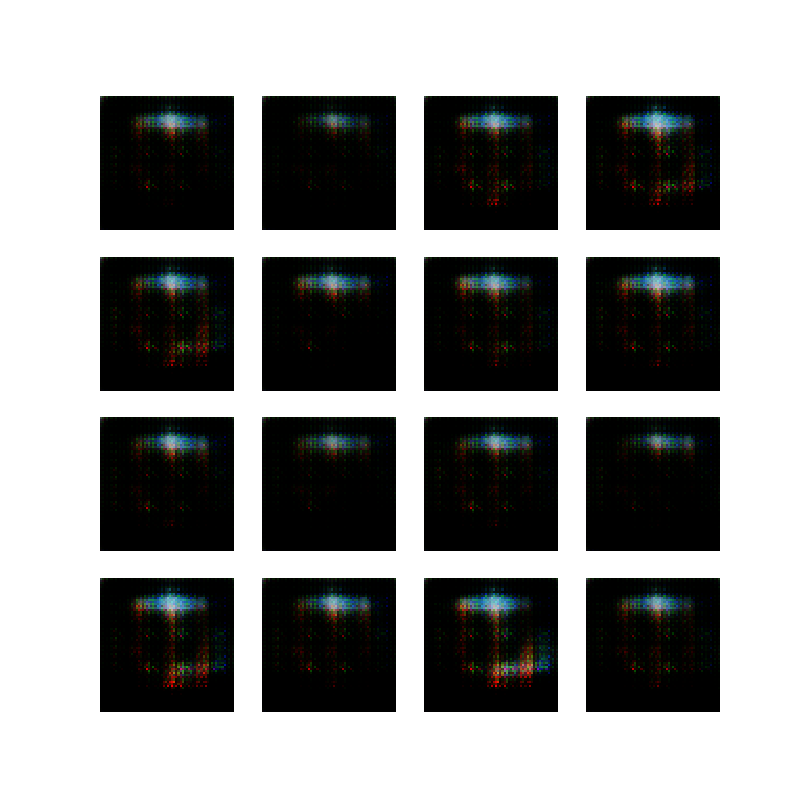
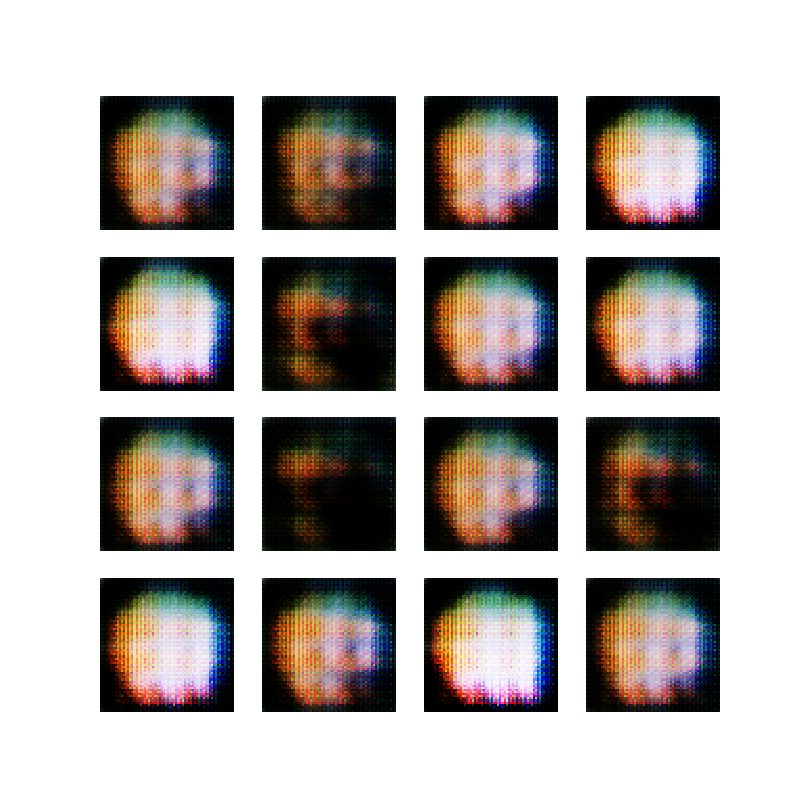

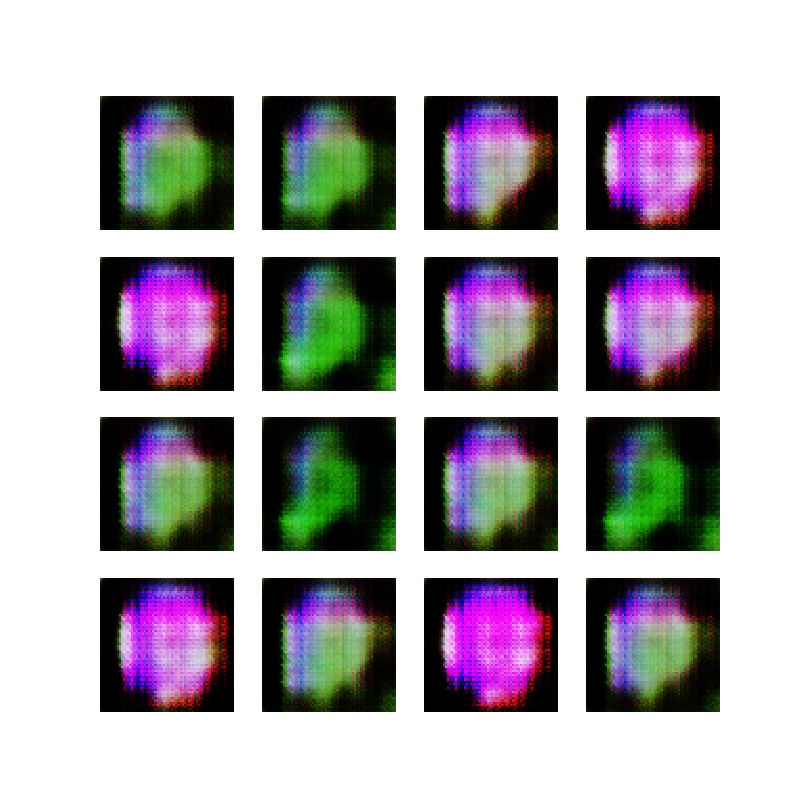

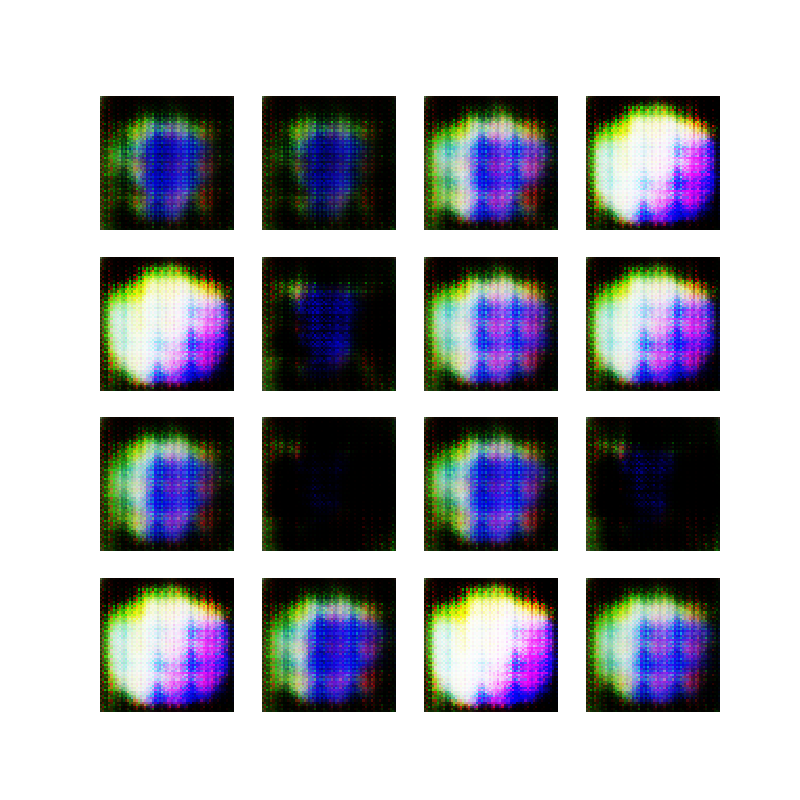

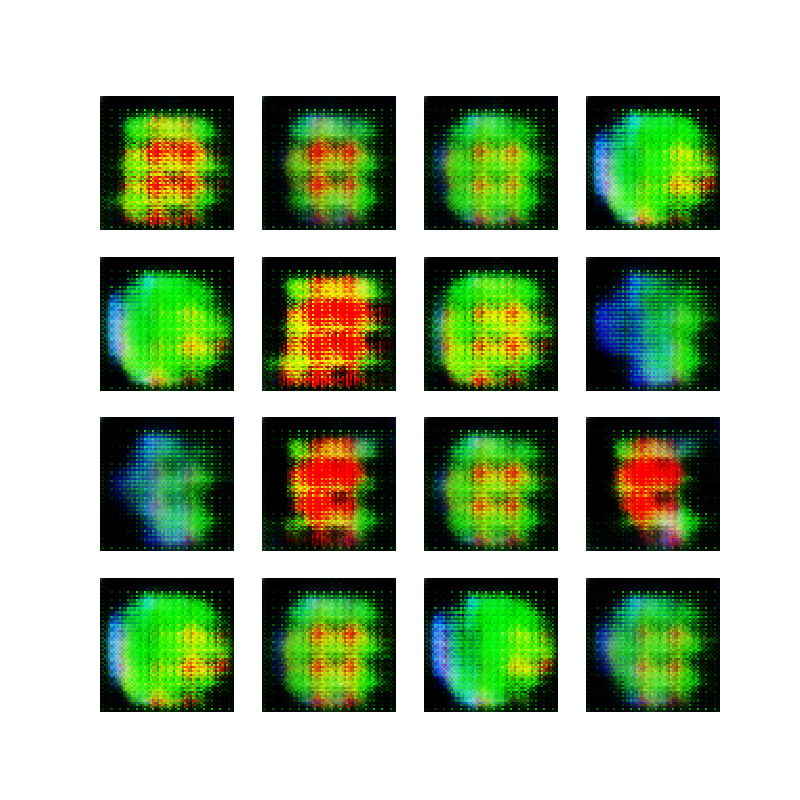
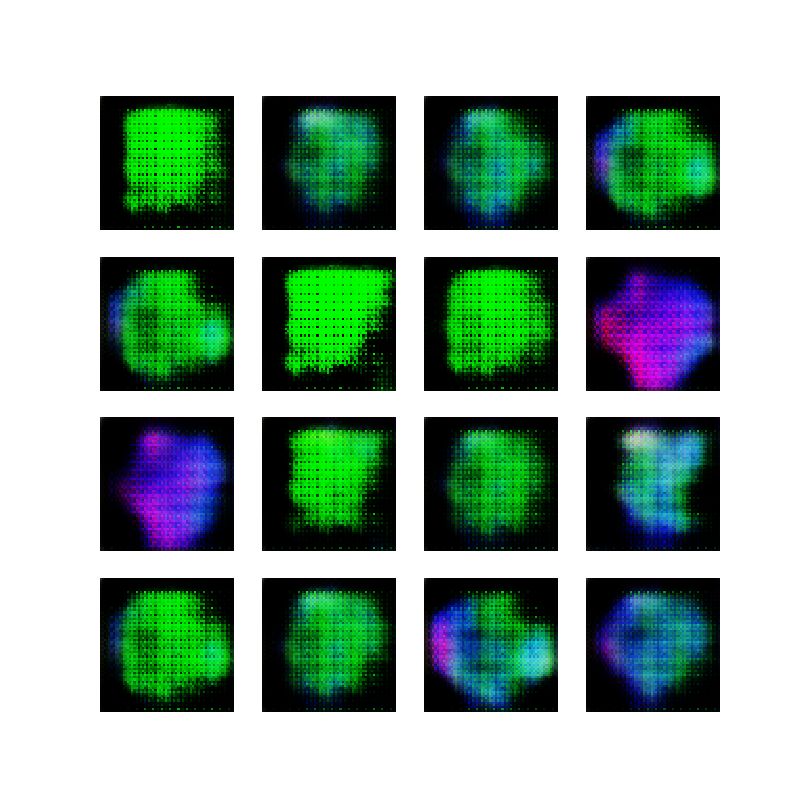

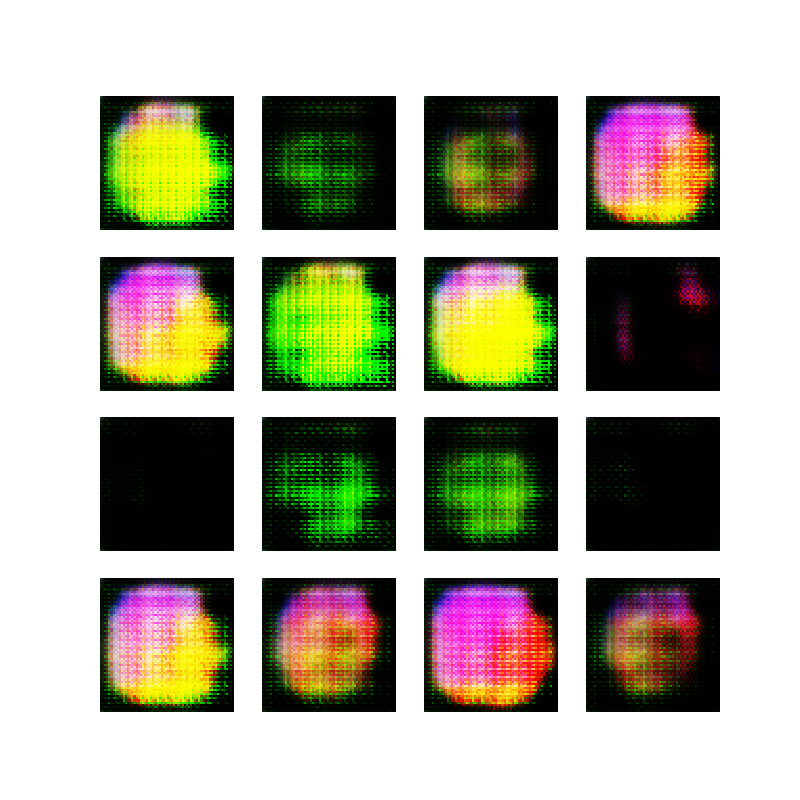
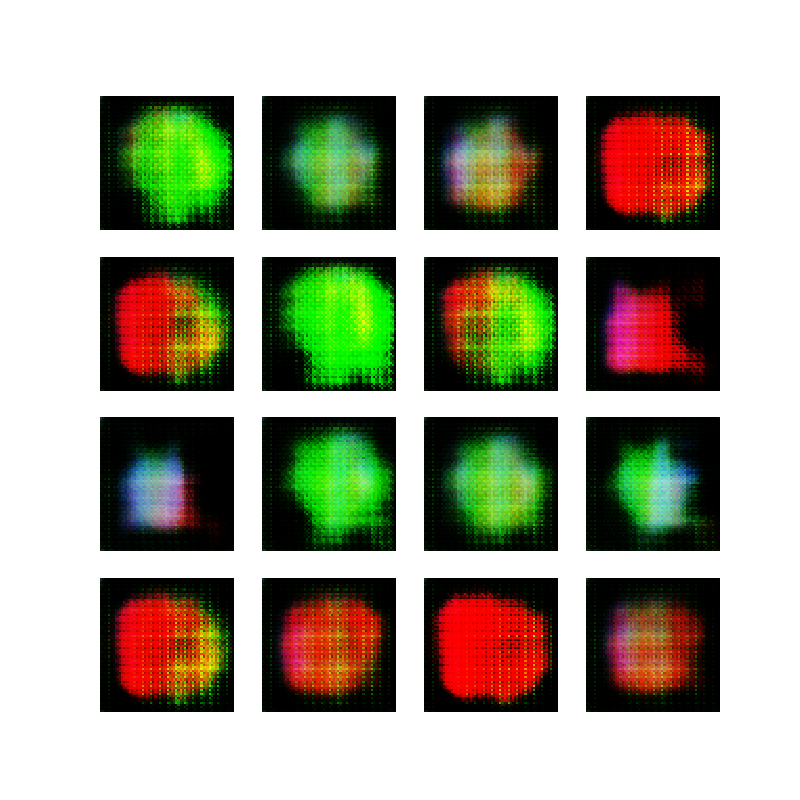

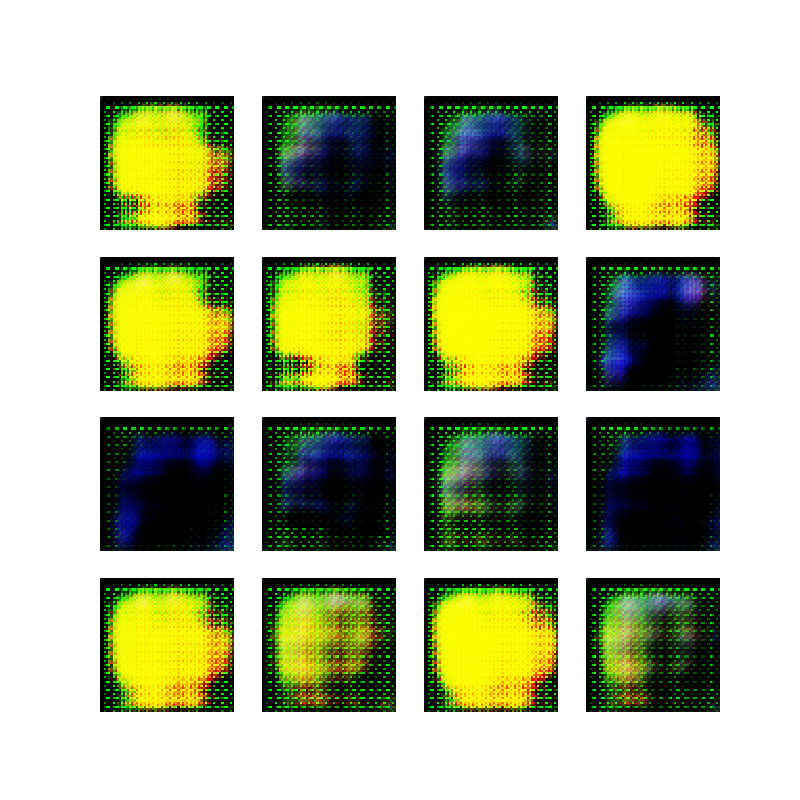
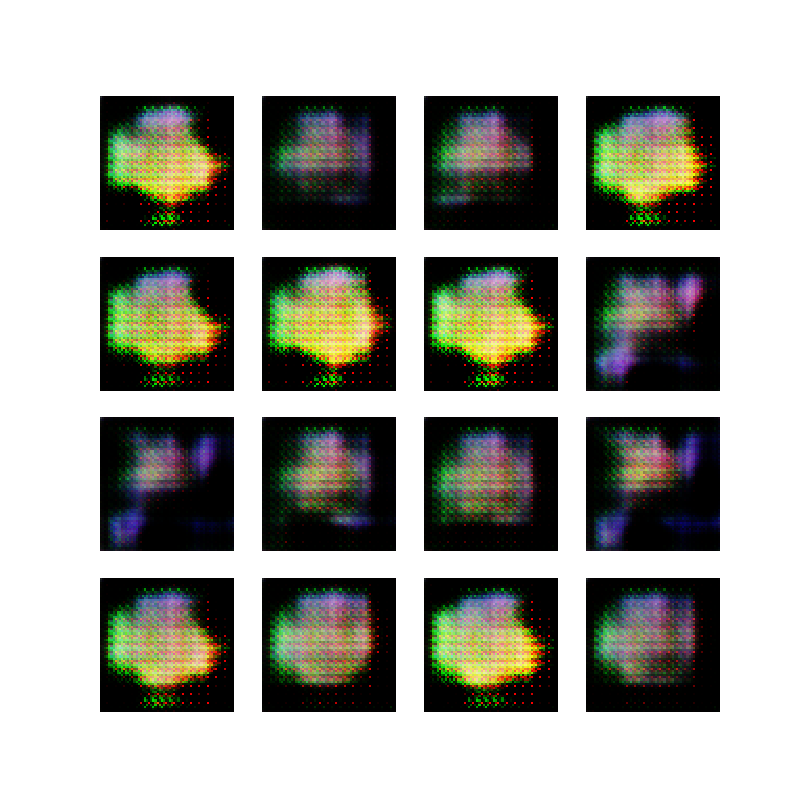
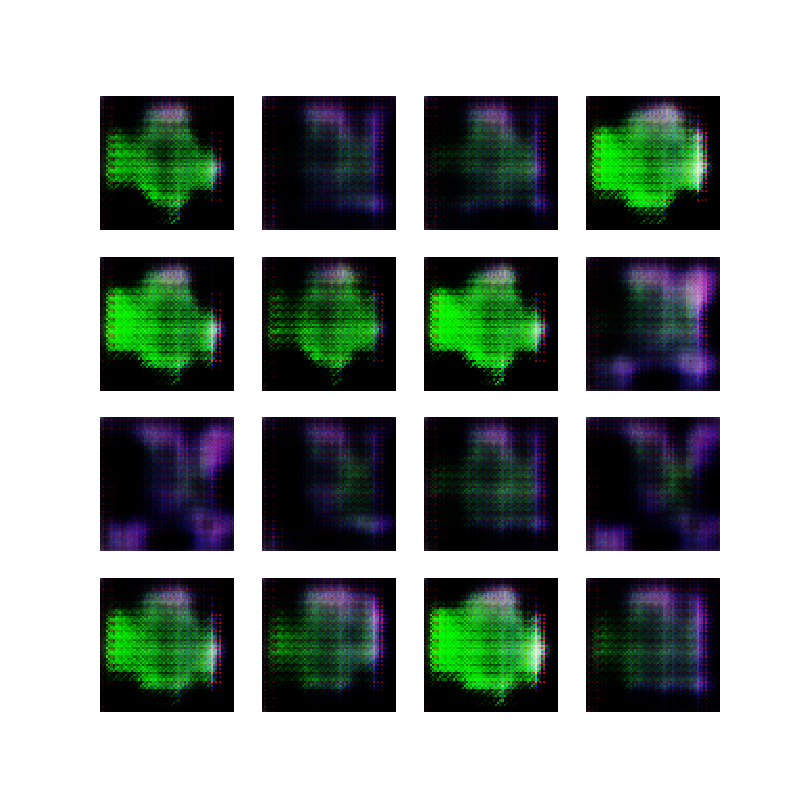


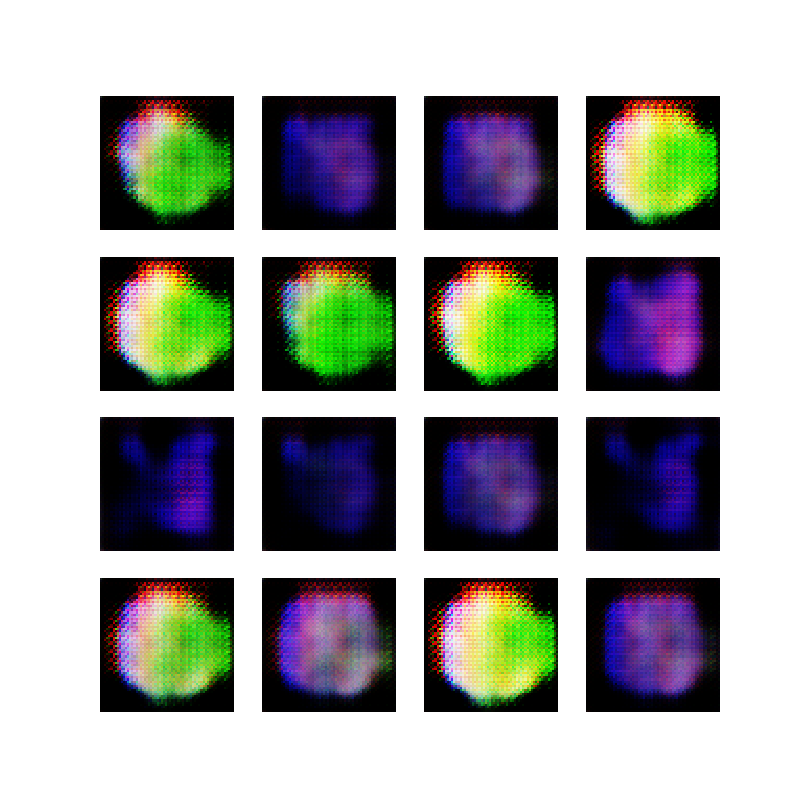
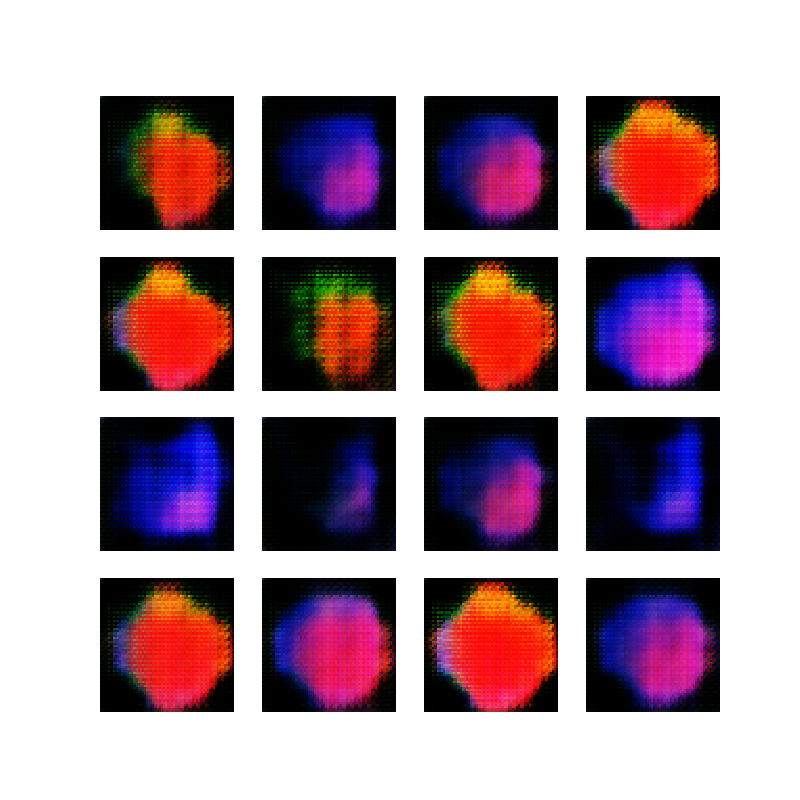
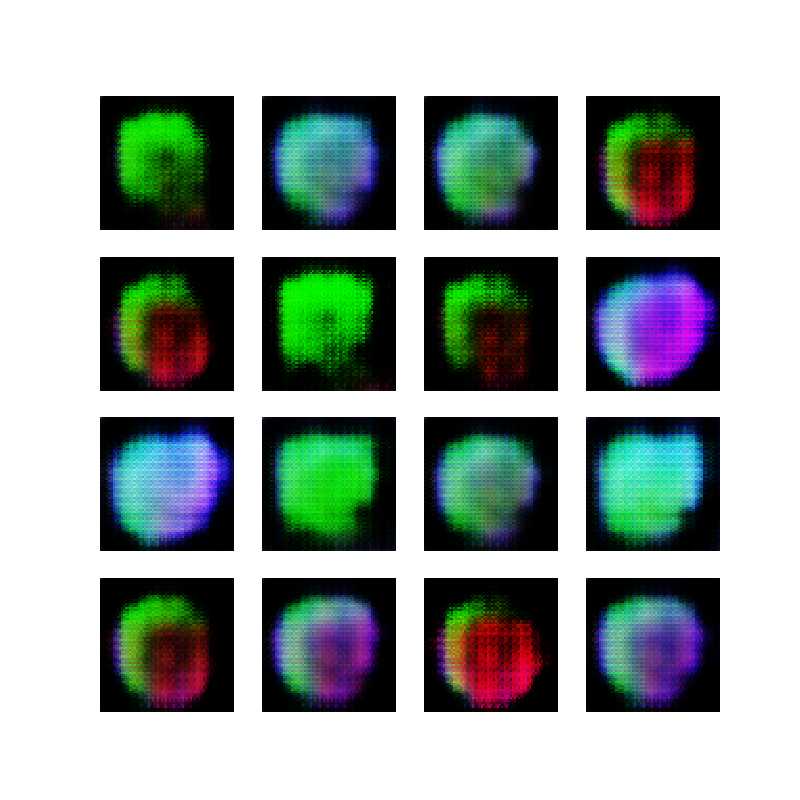
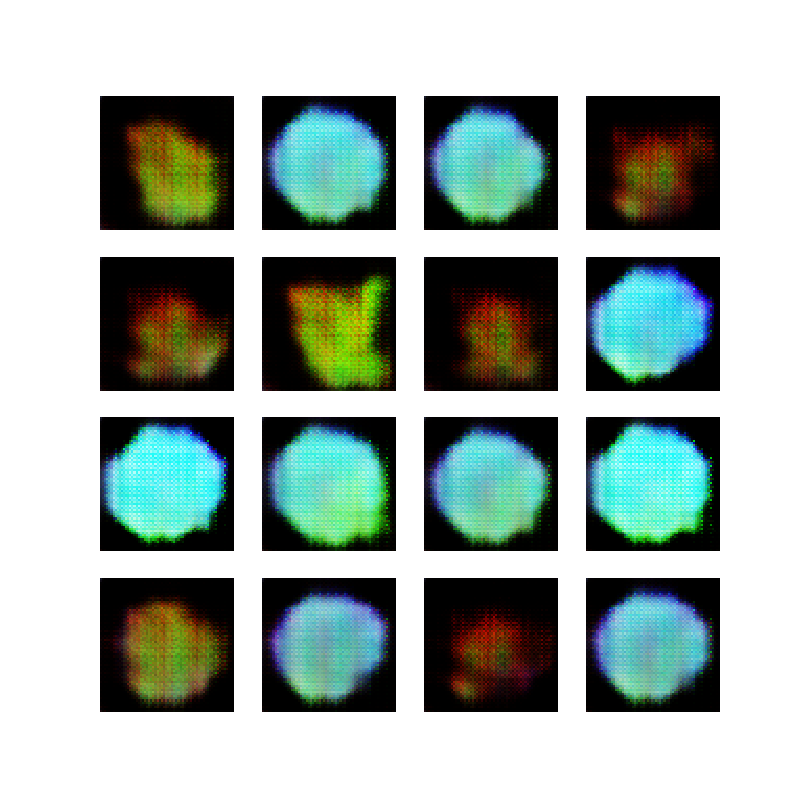
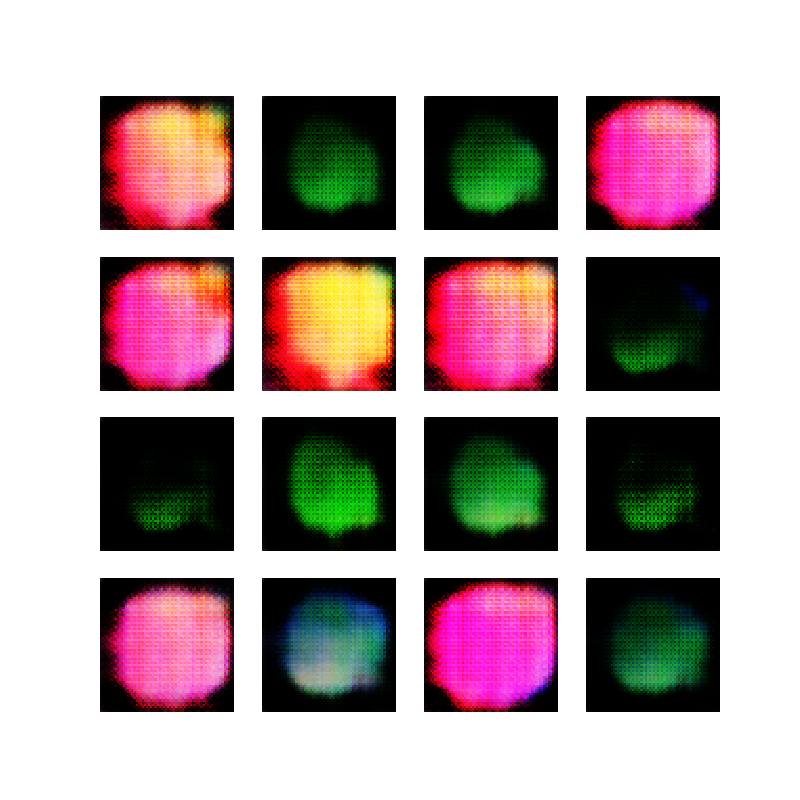

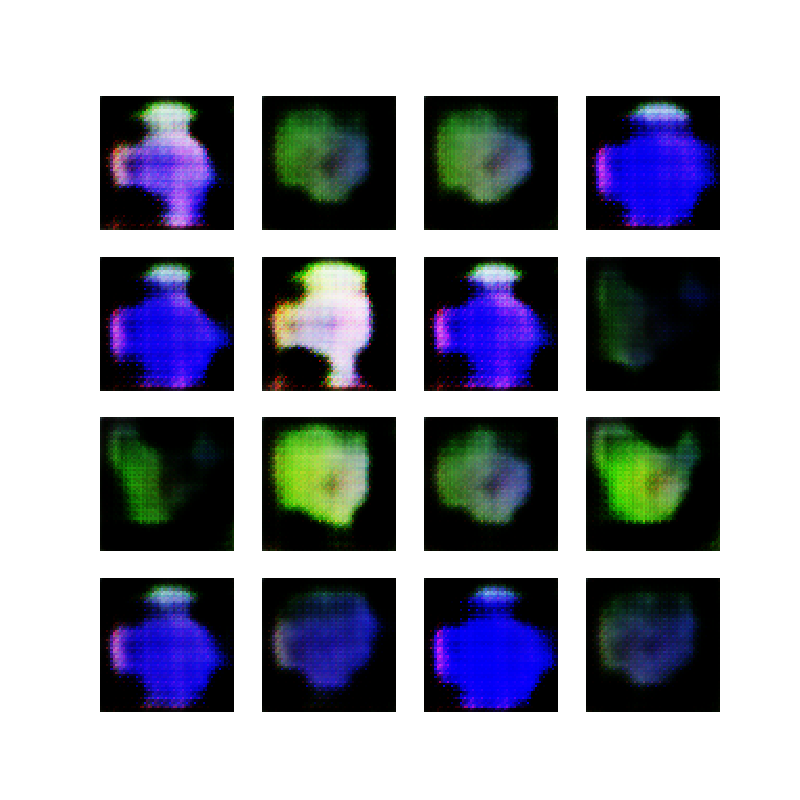
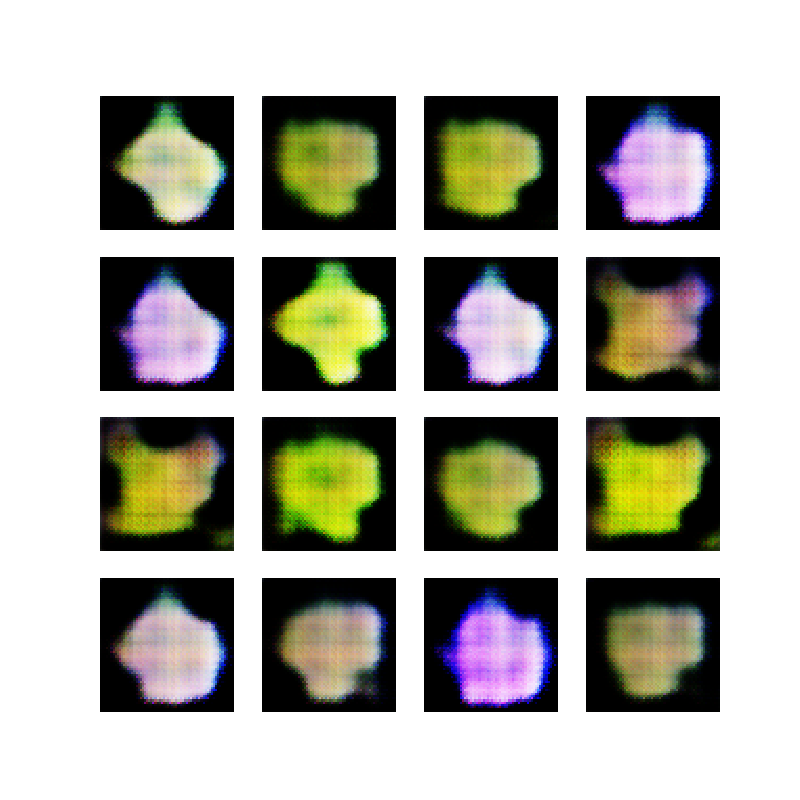

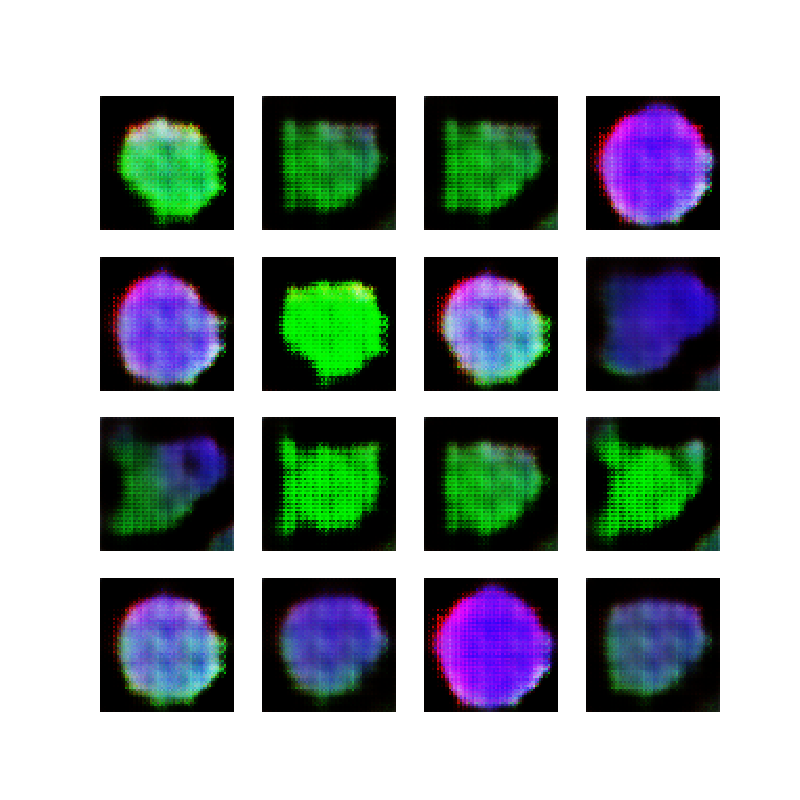
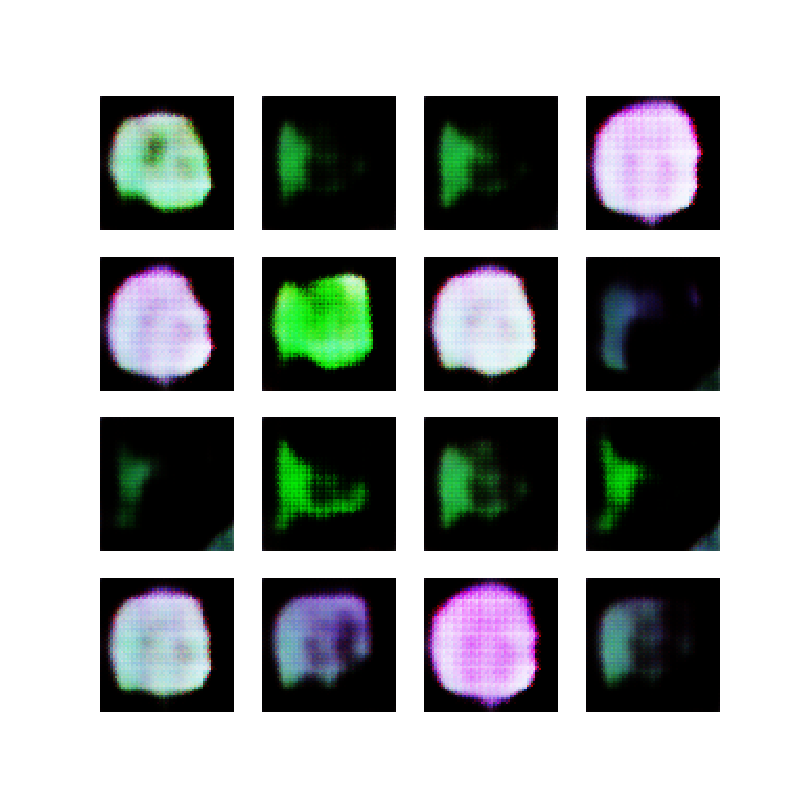
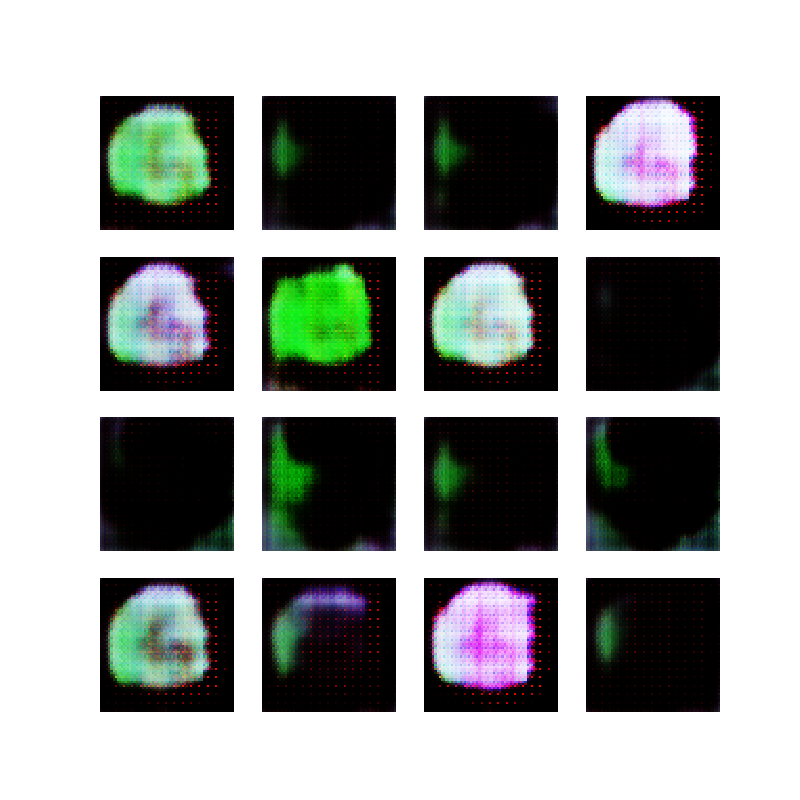
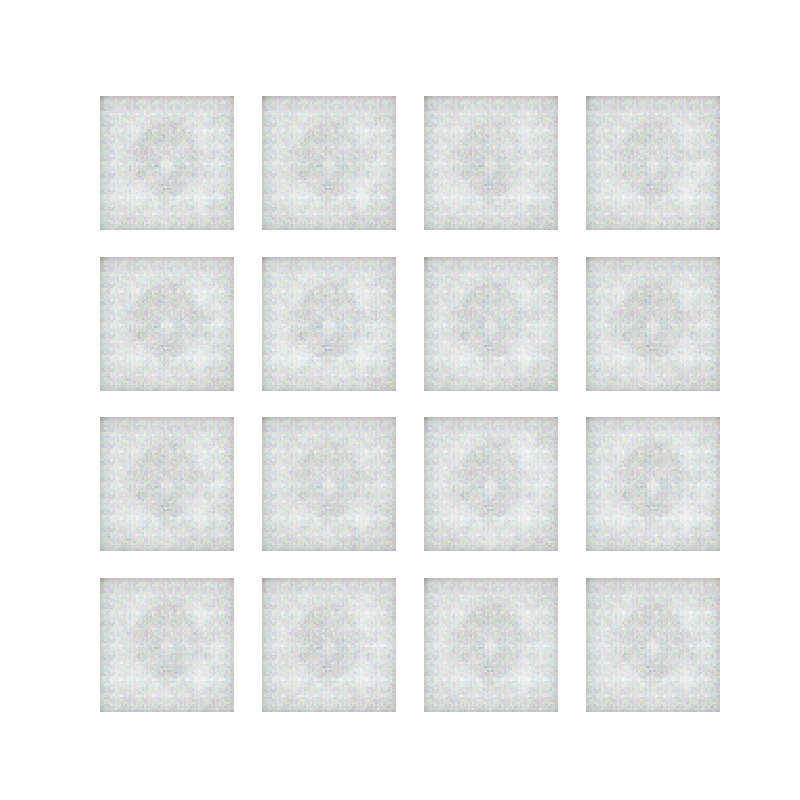

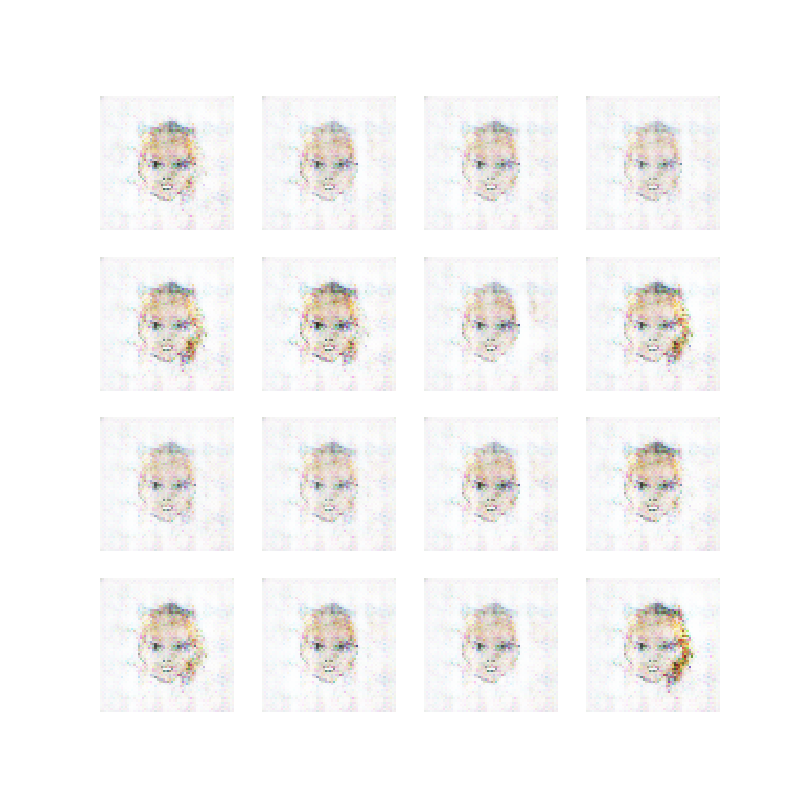
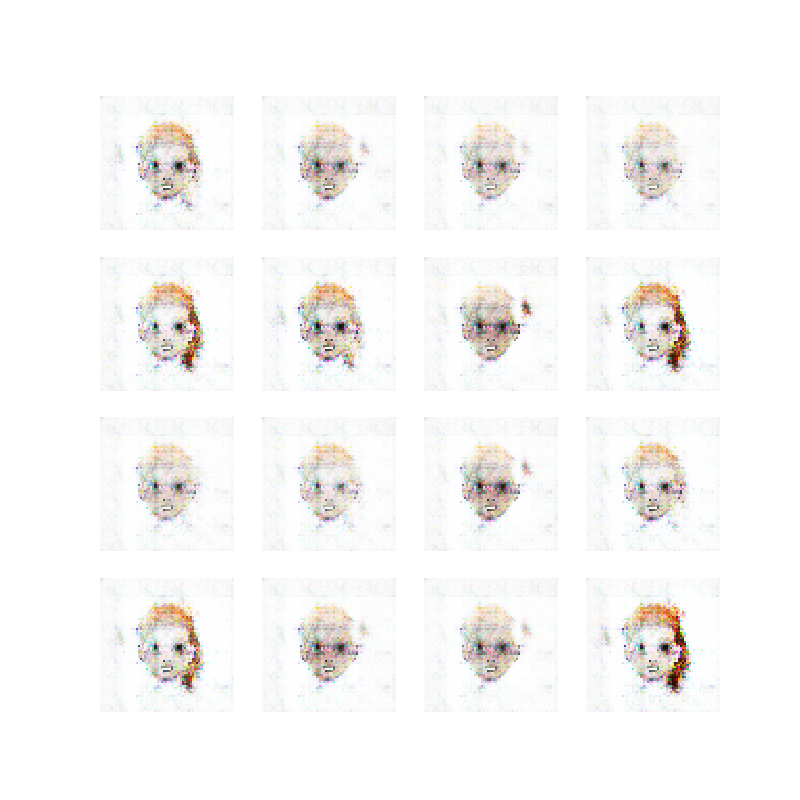
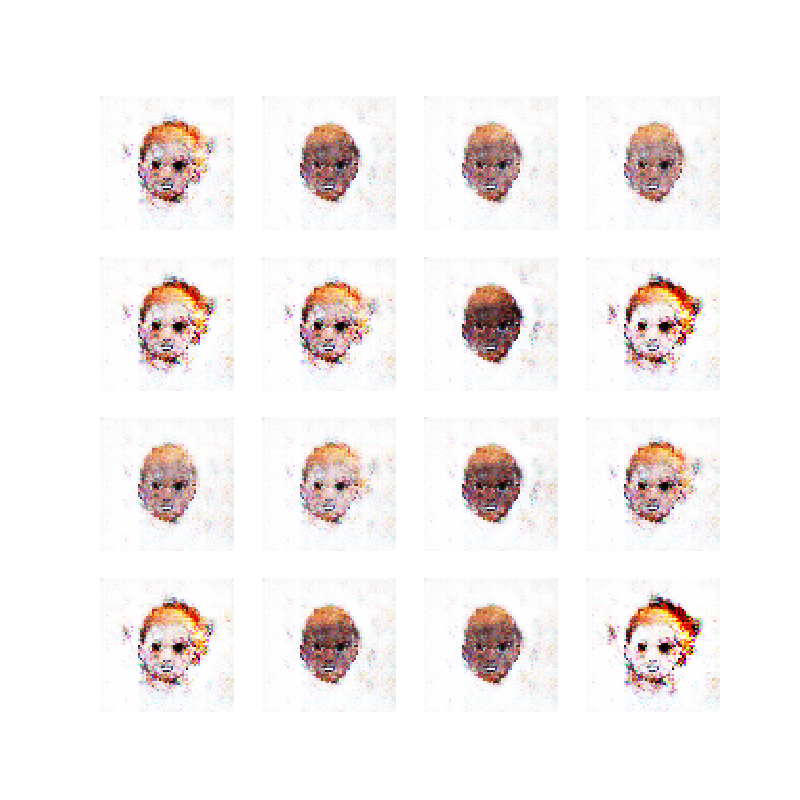
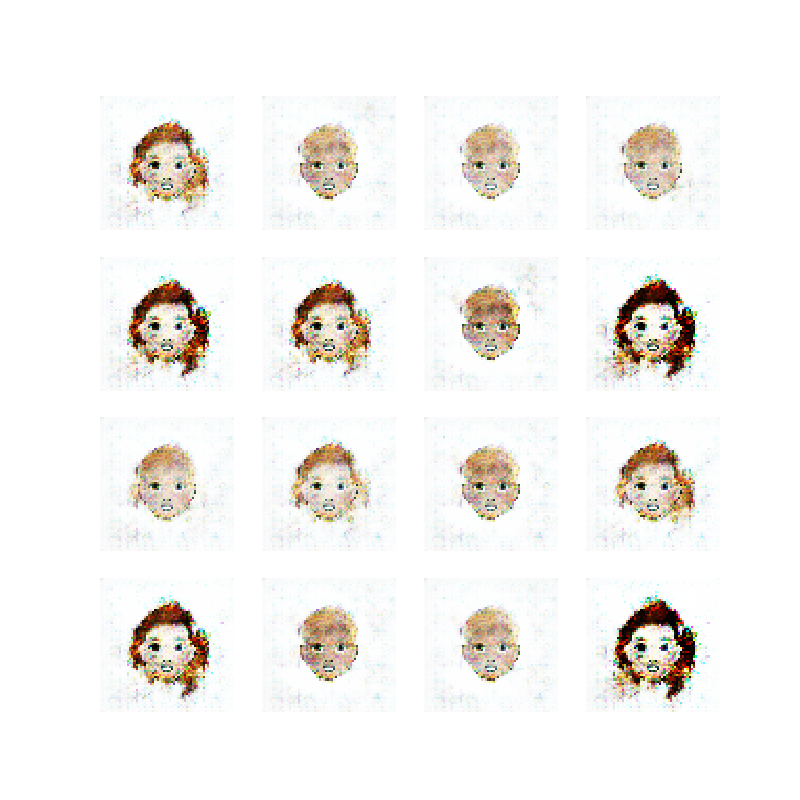

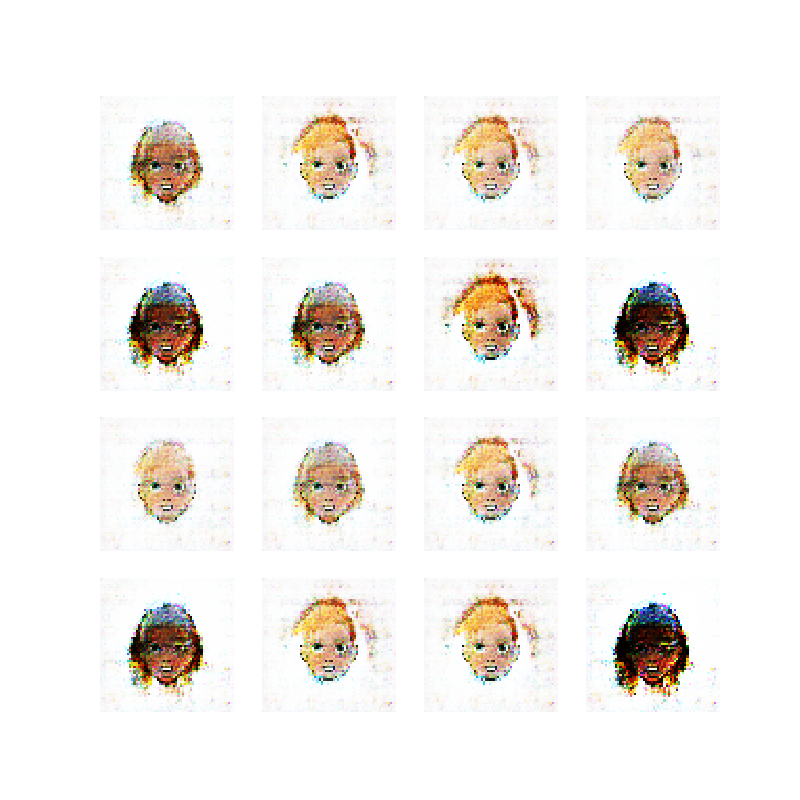
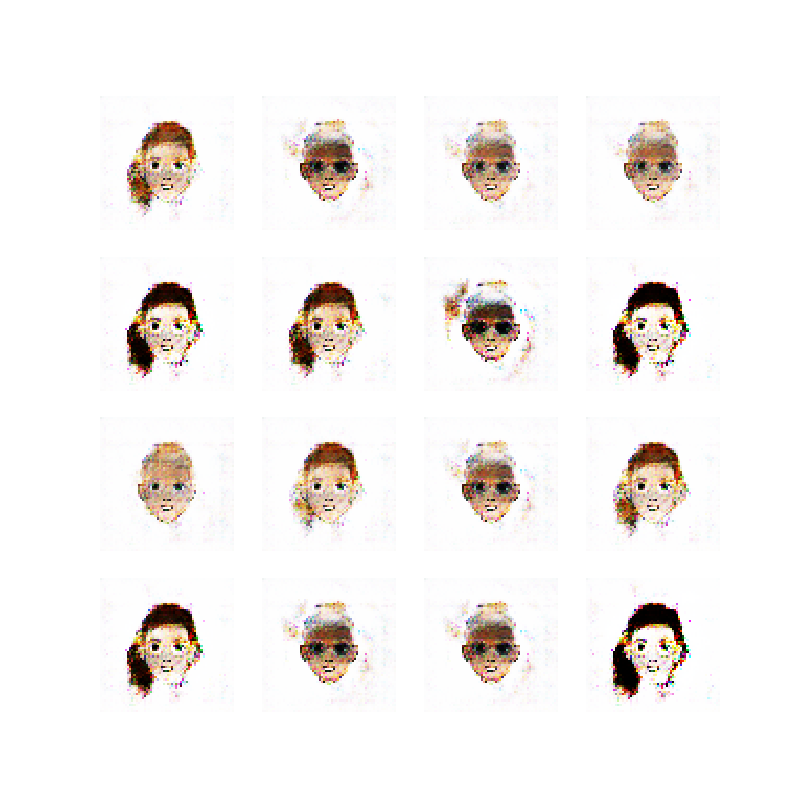
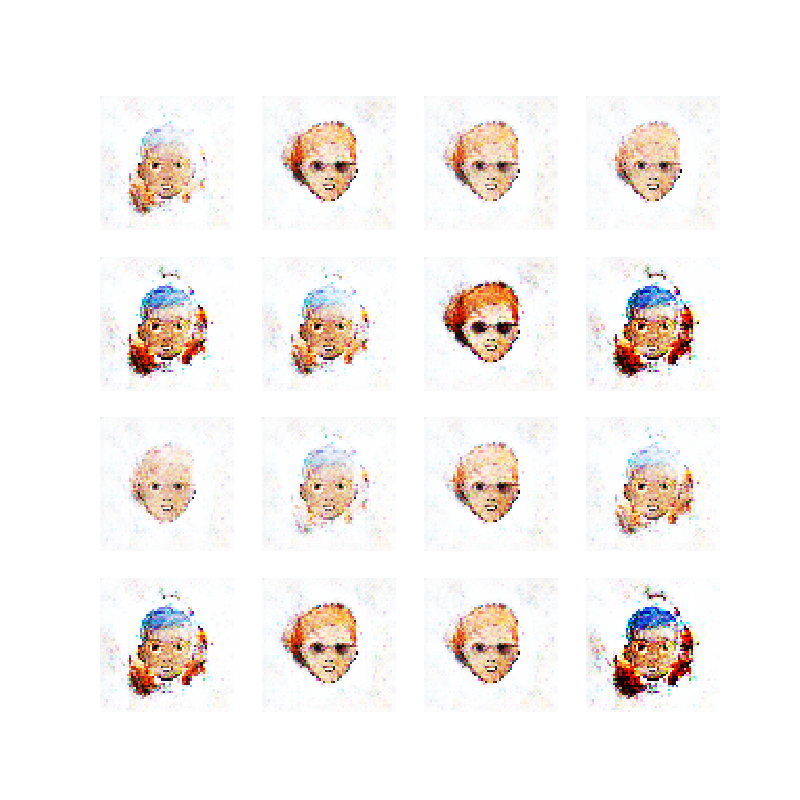


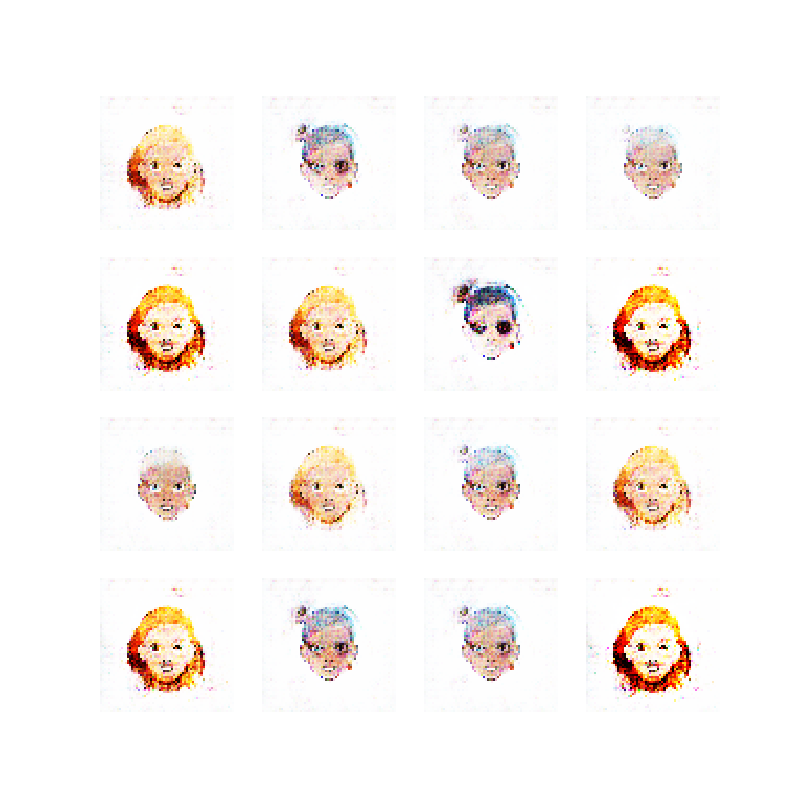
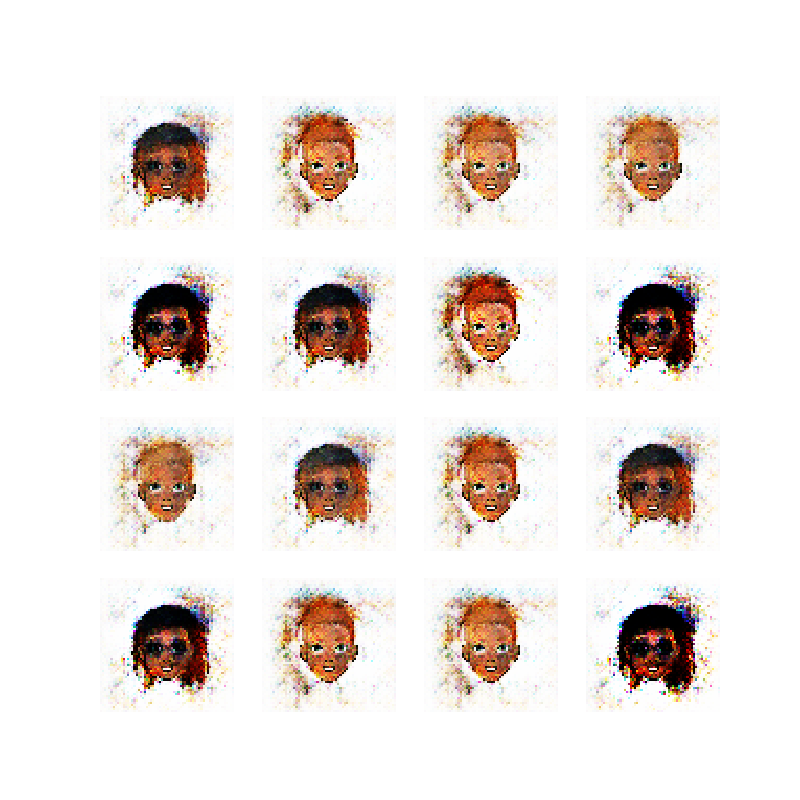
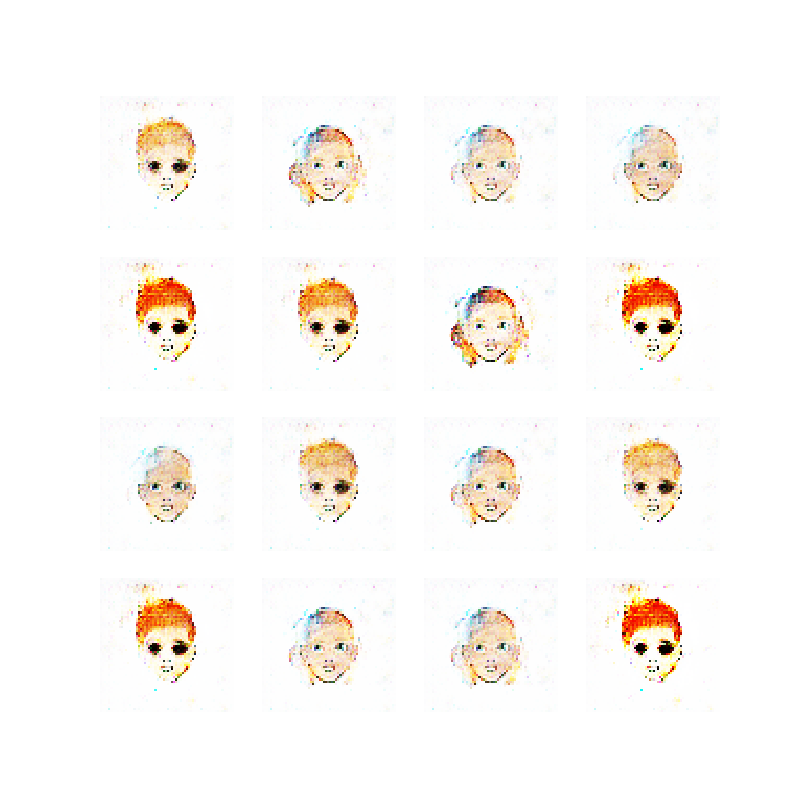
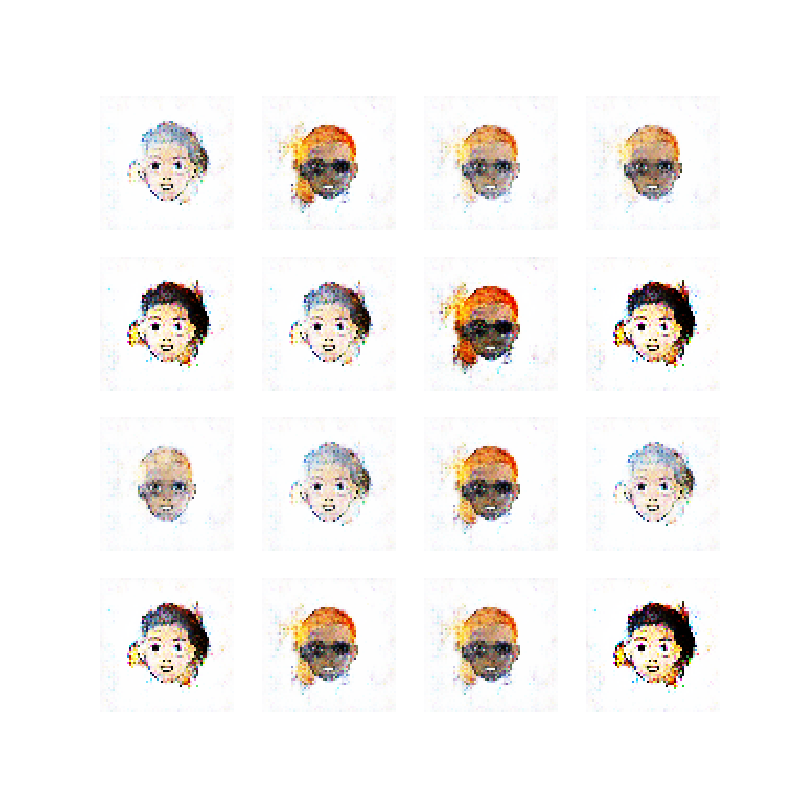

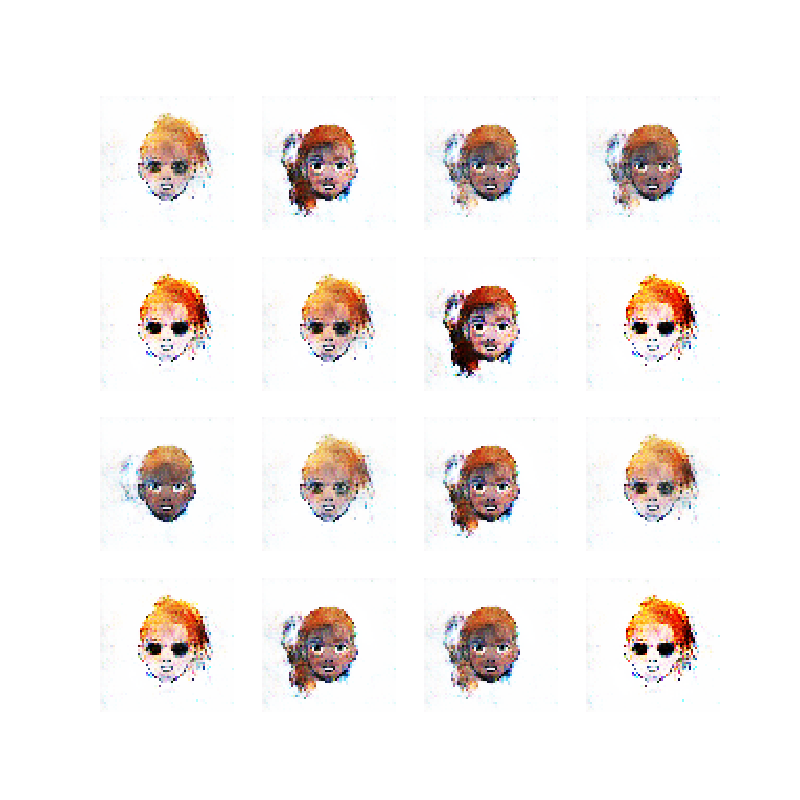
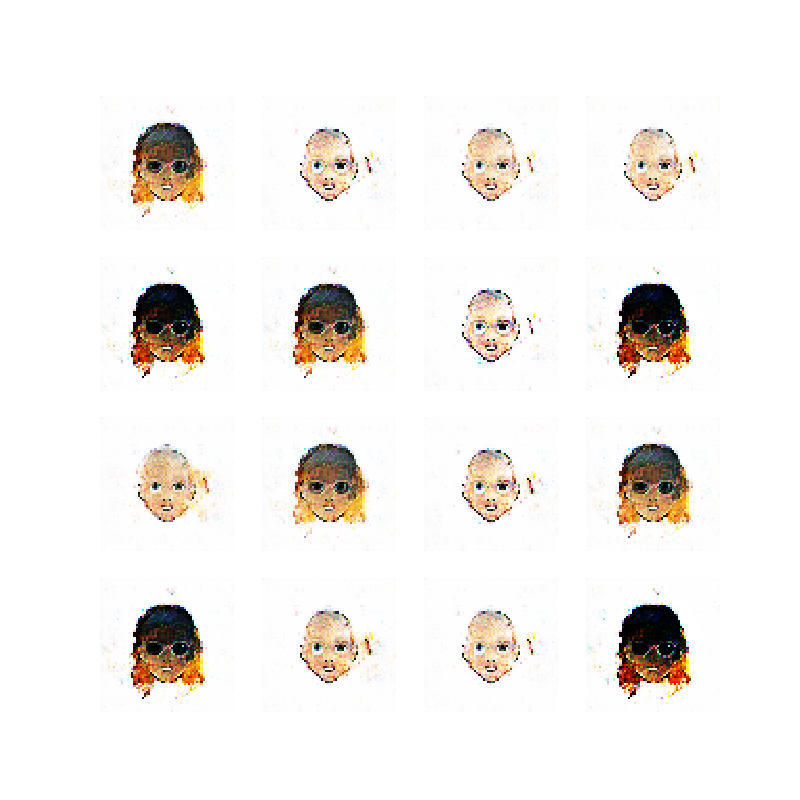

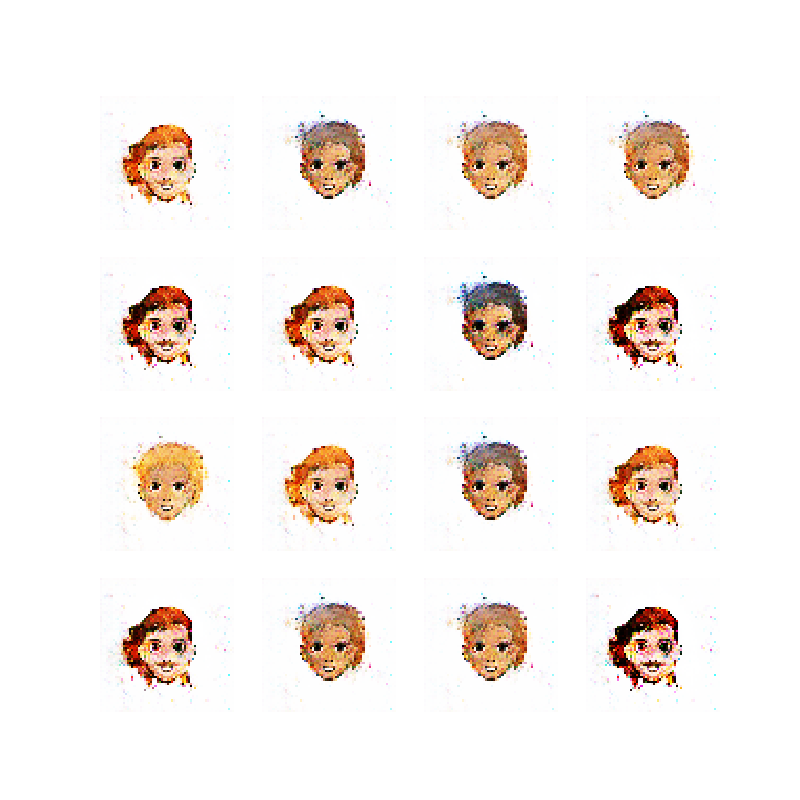
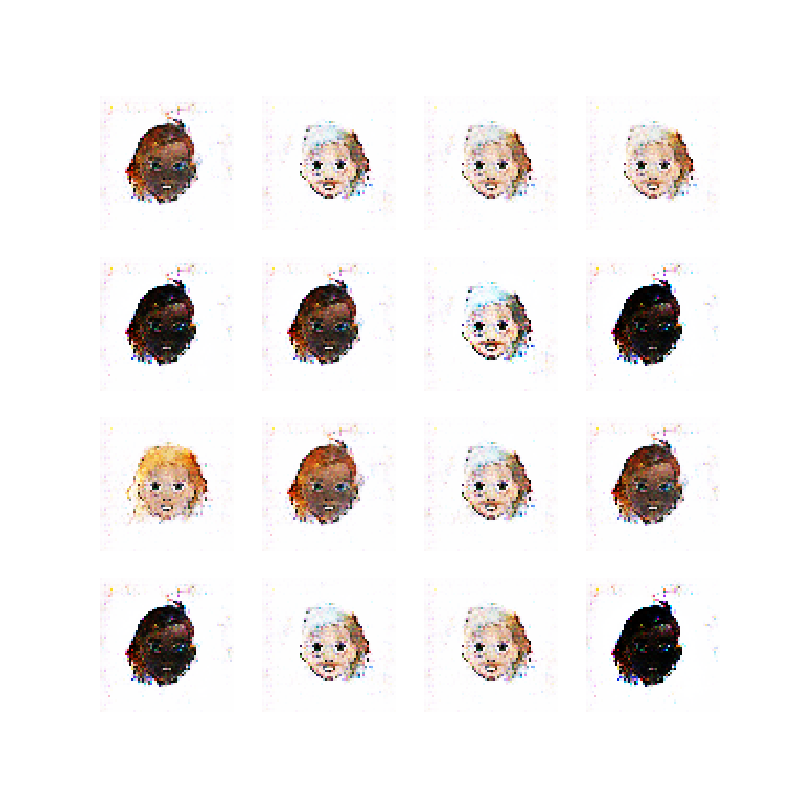

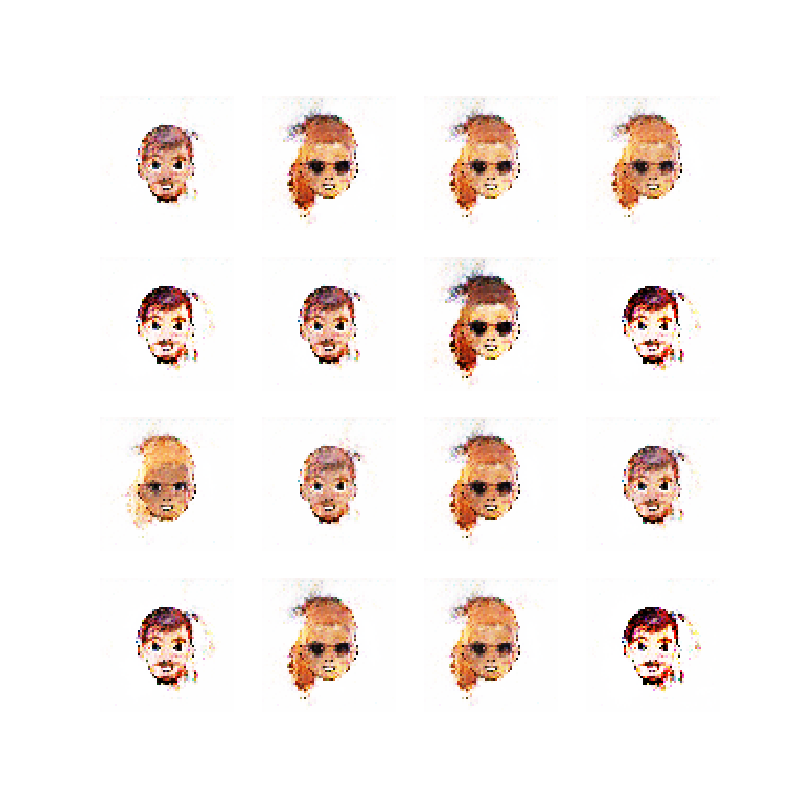
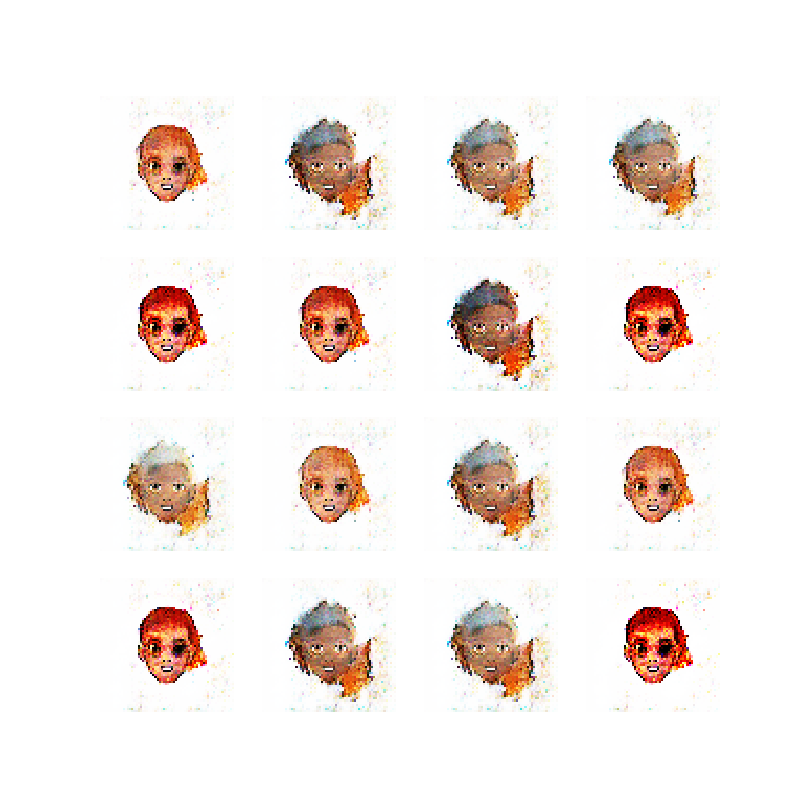
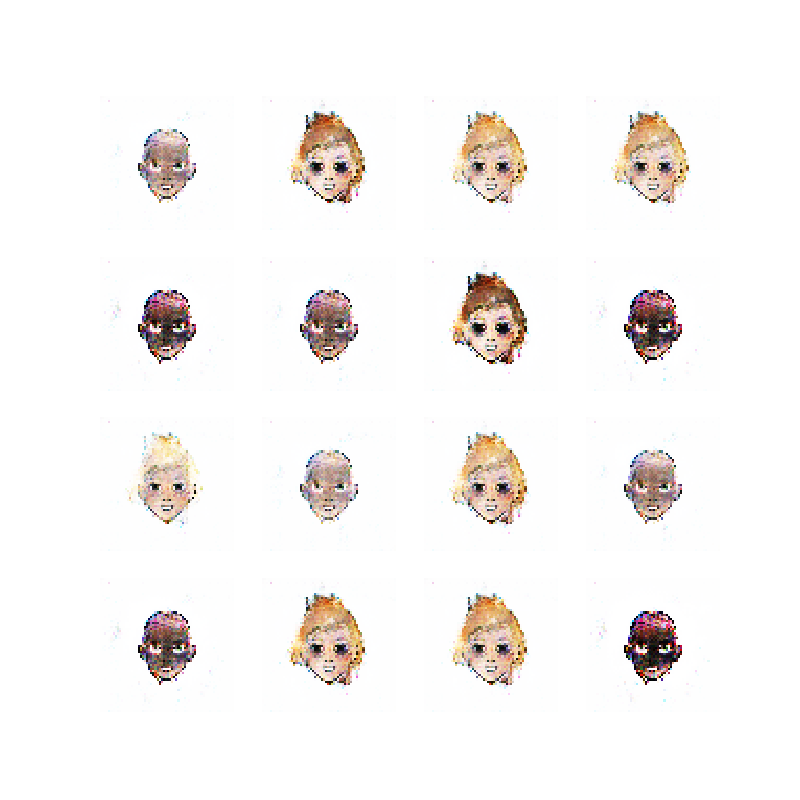
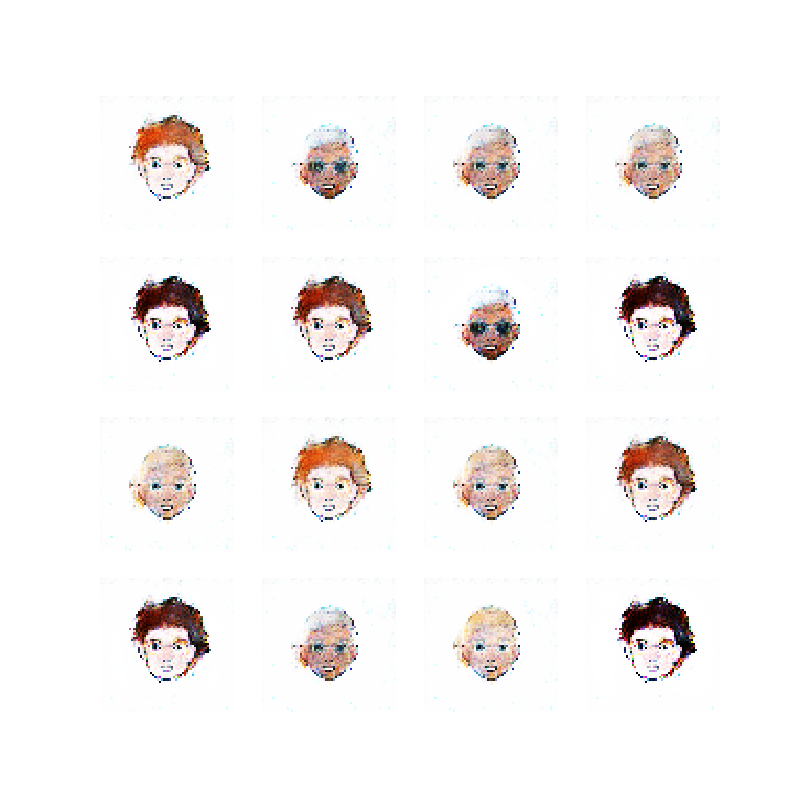

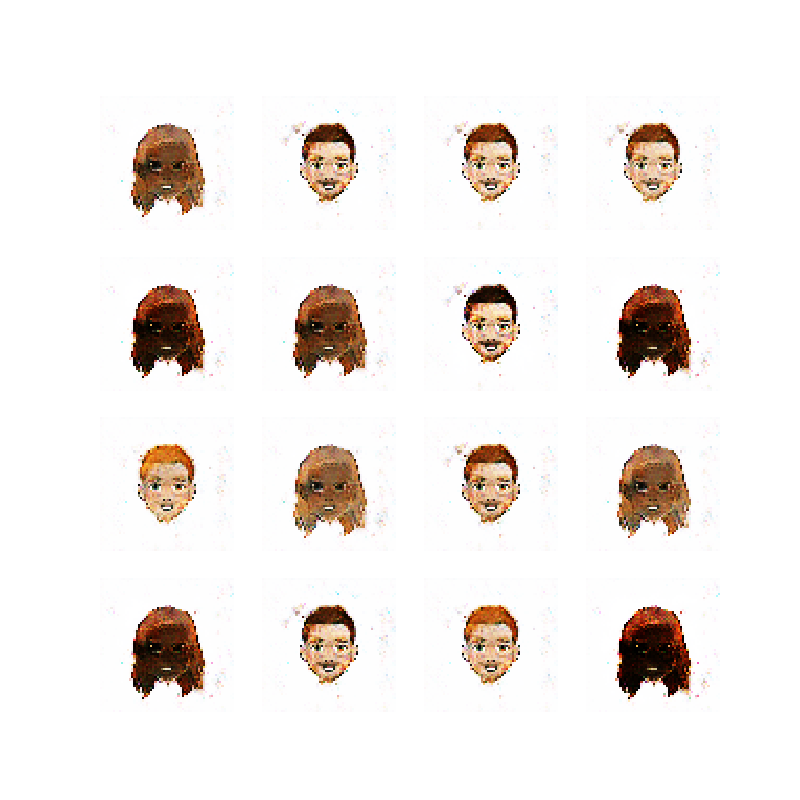
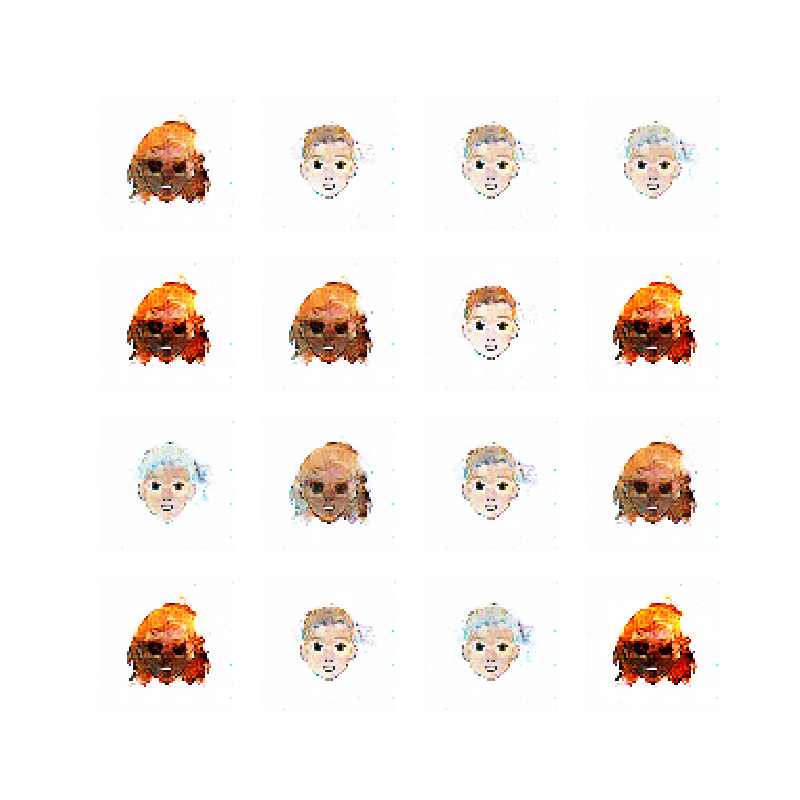
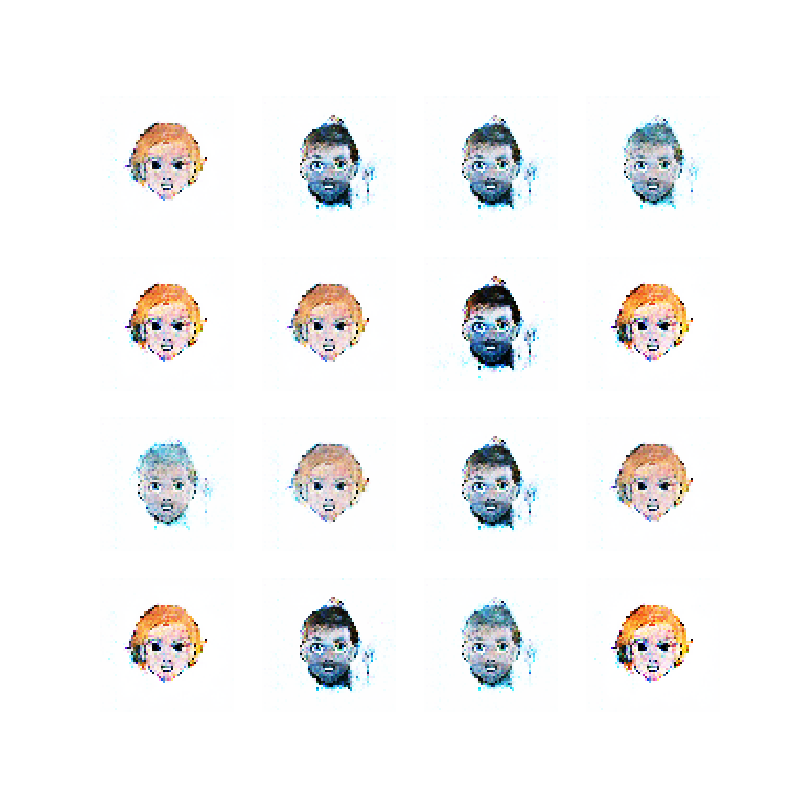

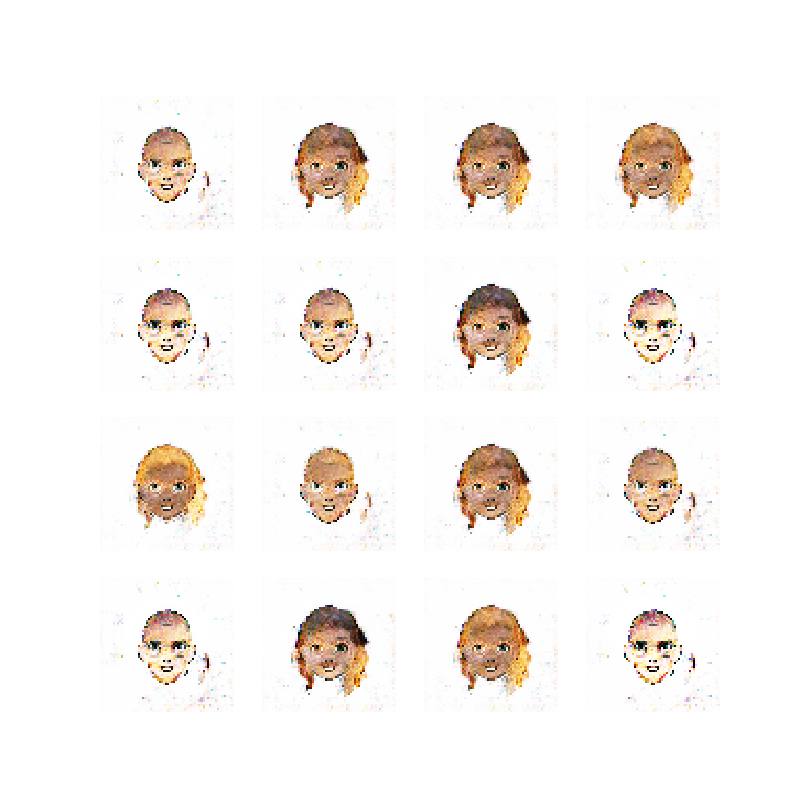

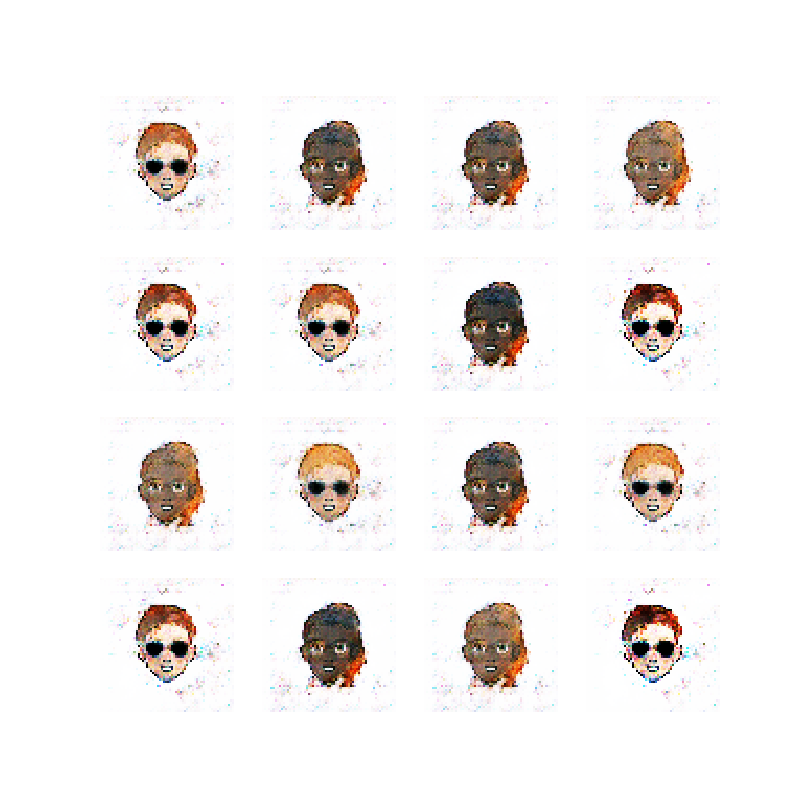



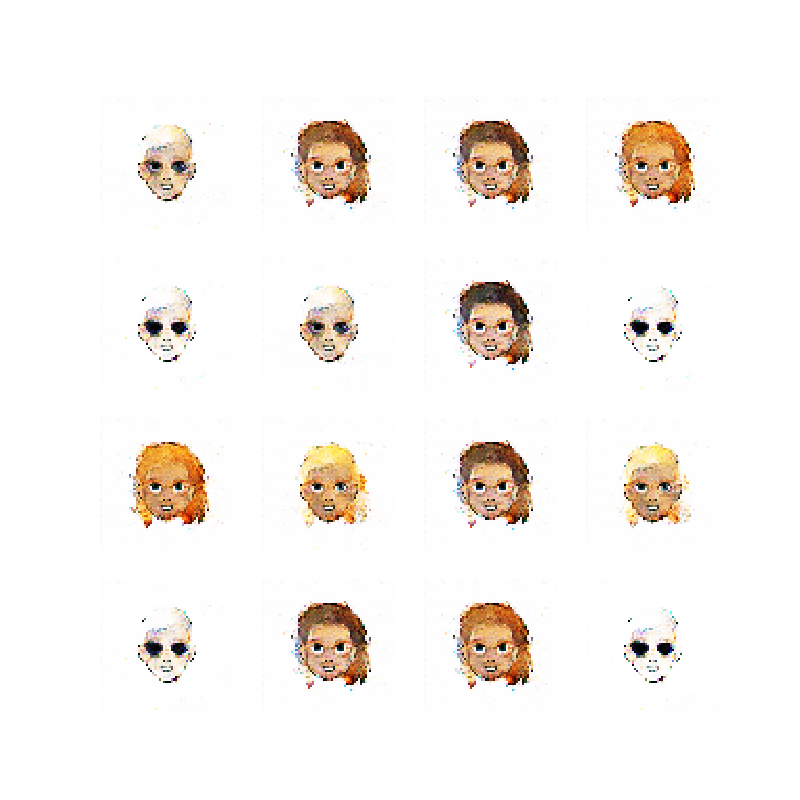

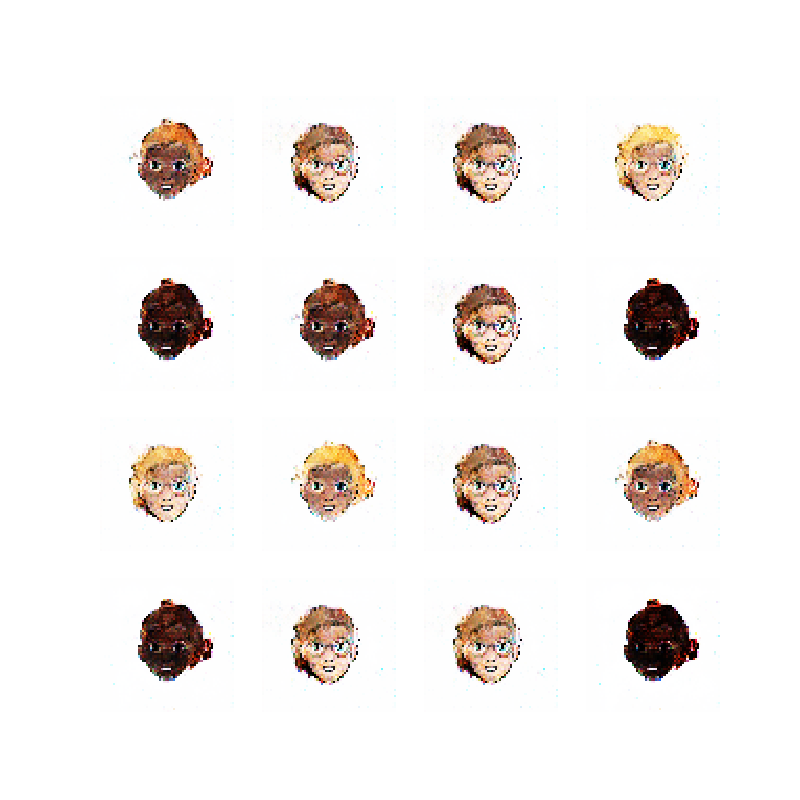
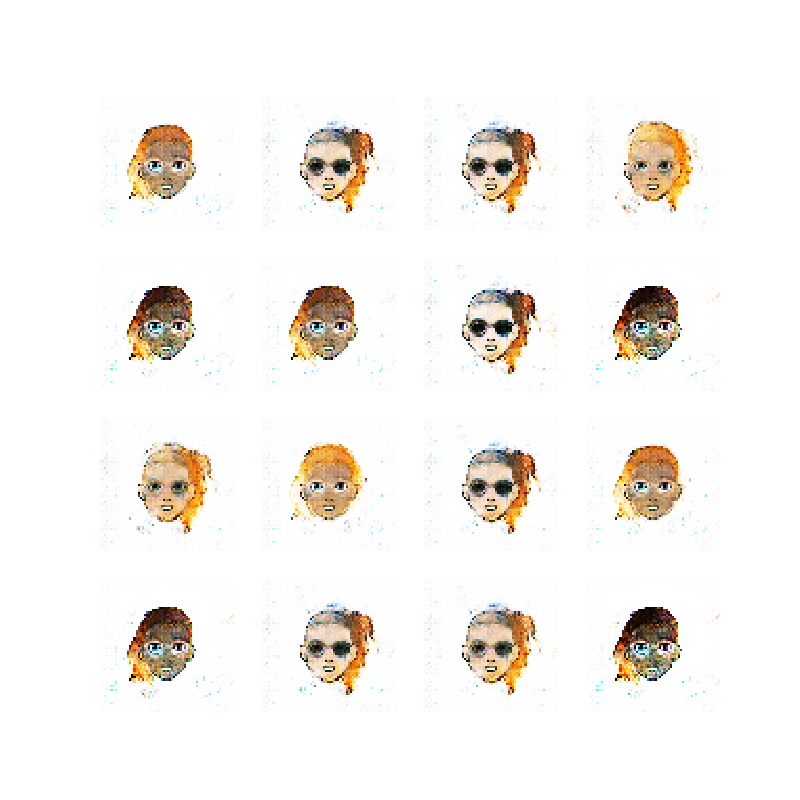
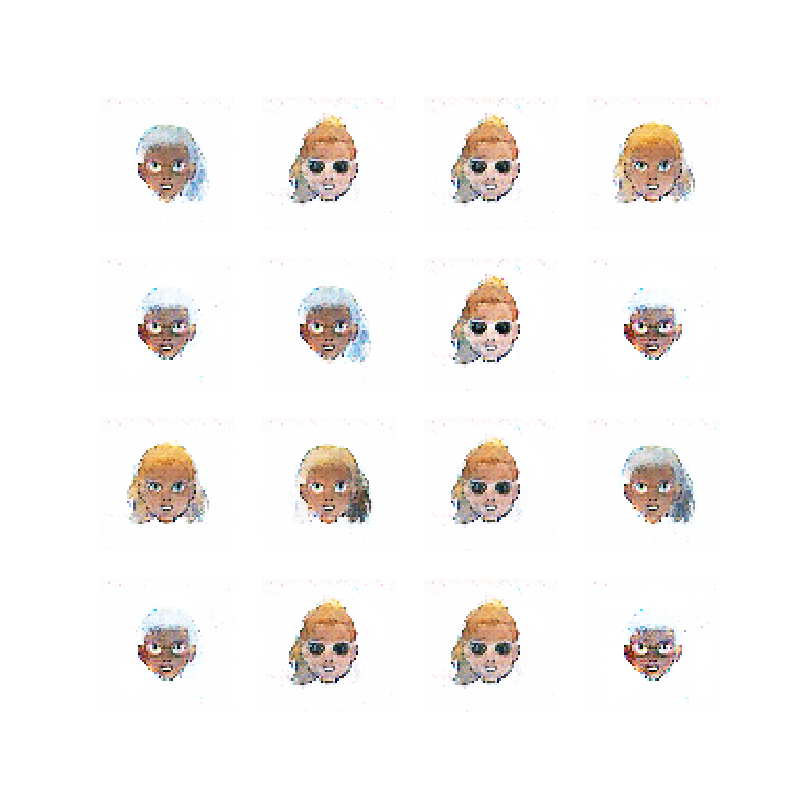
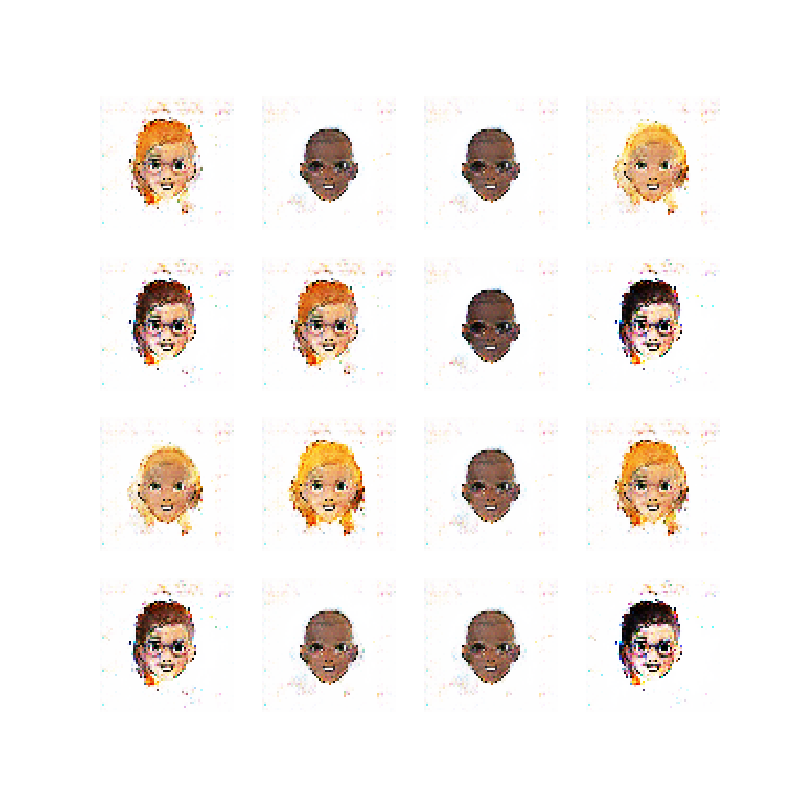

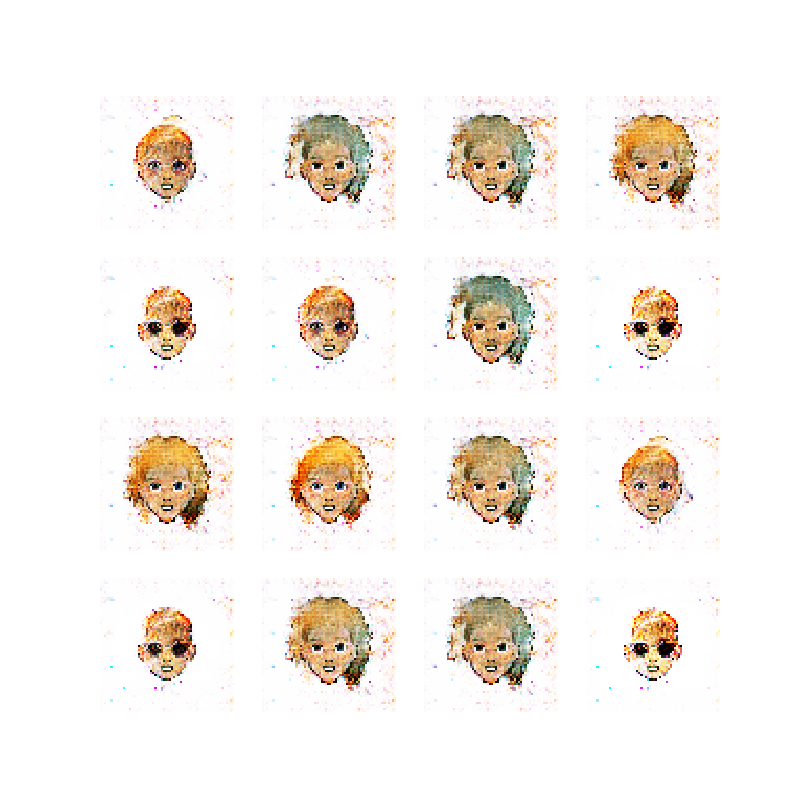


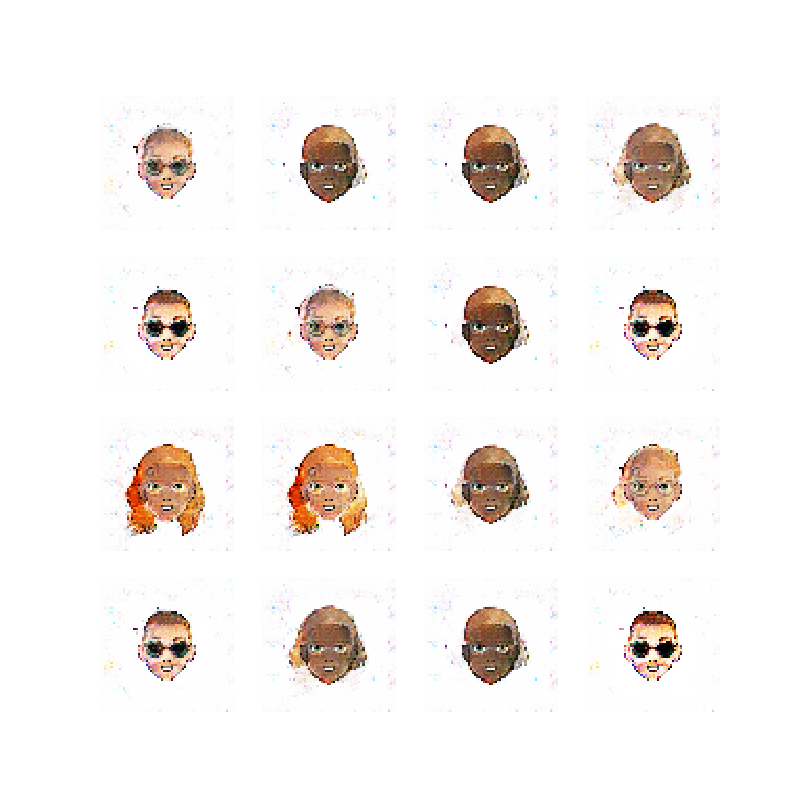

Super interesting!